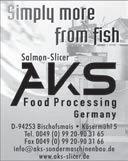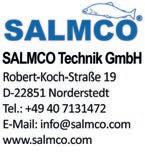









LITHUANIA is switching to electronic control and monitoring



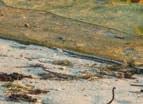

ALGIECEL produces algae to add to fish feed

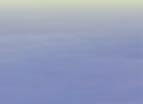

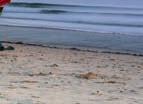


UKRAINE: Fishing co-op strives for a semblance of normalcy


































LITHUANIA is switching to electronic control and monitoring





ALGIECEL produces algae to add to fish feed






UKRAINE: Fishing co-op strives for a semblance of normalcy























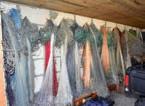




e sheries and aquaculture sector in Latvia plays an important role in coastal communities where it is often a source of livelihoods either directly or indirectly. Fisheries are classi ed into three segments, the distant water vessels, the o shore Baltic Sea eet which includes boats shing in the Gulf of Riga, and the coastal shery. All the sh caught by the eet is used for human consumption. One traditional product, smoked Riga sprats in oil, is threatened by labour shortages, and so a robotics company is devising a solution that will allow it to be made automatically. e state hatchery has recently added more capacity so that it can now breed more species and in larger numbers for restocking and for the aquaculture industry. Coastal shers intend to participate in projects that allow them to explore new venues for income generation, and a newly equipped sh processing laboratory at a university has recently been completed. ese developments show just some of the dynamism that characterises the sector. Read more from page 26
AQUA 2024, a once in six years conference and trade show for the aquaculture industry was held in Copenhagen in August this year. e industry has become more sophisticated, deploying complex technologies, and bigger, producing ever-larger volumes of sh and seafood, over the years. Research has played a valuable part in the industry’s development creating a deeper understanding of nutrition, sh biology, and genetics. e role of science in the progress made by aquaculture over the last two decades was apparent at the conference, where several hundred interventions illuminated every facet of production, sales, marketing, governance, o cial policy, and much more. e trade show was largely populated by companies selling products and services for the aquaculture industry, but there were also stands dedicated to projects involved in aquaculture in one way or another. Read more on page 12
As production from aquaculture increases so do the negative aspects of this activity. ese are particularly seen in western countries, where the farming of carnivorous species is widespread, and include organic and inorganic pollution as well as the contentious use of small pelagic sh to manufacture shmeal and sh oil, two important ingredients of sh feed. Integrated multi-trophic aquaculture (IMTA) may be part of a solution as these systems cultivate species at di erent trophic levels where outputs from one level function as inputs for another. Sponges could be a useful part of this system thanks to their ability to lter water, and European funded projects have investigated which sponge species are most suited to IMTA systems to give maximum biotechnological value. Read more on page 23
Rules governing food safety must be enforced to ensure con dence in the supply. When food products enter the EU from all over the world, as is the case with sh and seafood, the most globally traded food group, producers must conform to the safety standards imposed by the markets they export to. ese standards have grown more comprehensive over the years and now encompass not only the health and safety of consumers, but also environmental and social sustainability. To reduce the risk of sub-standard products, binding international rules to harmonise quality and safety standards are devised that cover all aspects of the trade in seafood from sourcing, to processing, packaging, and export. Ensuring the safety and quality of sh products requires enhanced international cooperation and the development of science-based standards. Read Dr Manfred Klinkhardt’s article on page 42
Lampreys with a round sucker lled with horn-like teeth and a sharp rasping tongue are ideally equipped for a parasite. e animal attaches to its prey with its sucker and proceeds to feed on the tissue and uids of its victim. River lamprey, one of several lamprey species, has su ered a decline in stocks due to pollution and the loss of spawning areas. Its status has necessitated its inclusion in the EU Nature Conservation Programme under the Habitats Directive. Lampreys are a delicacy in some countries where there is a targeted shery for the animal during the fall and winter. However, catches are small, often too low to even register in the statistics. Read more about the biology and lifecycle of lamprey from page 47
10 Aquaculture Congress, 28-29 June 2024, Athens The 3rd Aquaculture Congress 2024 was an unprecedented success
12 AQUA 2024, 26-30 August 2024, Copenhagen, Denmark Long and winding road
14 AQUA 2024, 26-30 August 2024, Copenhagen Salmon too suffer from coronary heart disease
17 Seagriculture EU 2024, 18-20 June, Tórshavn, Faroe Islands Global seaweed industry descends on Faroe Islands
19 Holder of the EU Presidency, Hungary, coordinates joint EU position at COFI EU aquaculture stands to benefit from FAO priorities
20 Microalgae in feed bring nutritional and health benefits to fish Innovative way to culture microalgae sustainably
23 As fish farming expands globally, ensuring its sustainability becomes ever more important Sponges’ potential for bioremediation in aquaculture
26 EU and national support measures keep the sector on an even keel Fisheries and aquaculture in Latvia
30 The Faculty of Agriculture and Food Technology at LBTU A new centre of fish processing goes on stream
33 The Latvian coastal fishery Resilience in the face of challenges
36 Latvia has longstanding traditions and experience in fish restocking Unlocking the innovative potential of the aquaculture industry
39 Automation to bring sprat processing into the 21st century Modern solution for an age-old industry
42 Food safety always takes top priority Fair rules of play in global seafood trade





















































































45 Lithuanian fisheries administration develops apps for recreational and coastal fisheries Preparing for the revised EU fisheries control system
46 Lithuania questions Russian fishing activity in the Baltic Sea Risk of unsustainably-caught fish entering EU
47 Species profile: Lamprey A threatened species or a valued food item?
50 The lamprey fishery in Latvia, Lithuania, and Galicia (Spain) Catches of an iconic species trend lower




























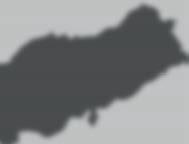






53 J.P. Klausen & Co. A/S, Denmark Globally-caught fish to satisfy consumers around the world






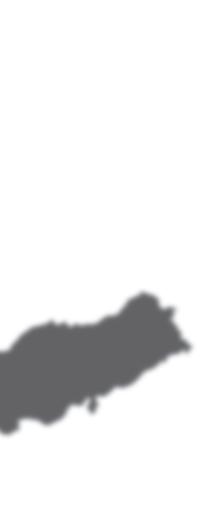
54 Ukraine’s seafood business: Impacts of Russia’s war against Ukraine War forces fishing cooperative to relocate from seas to estuaries
56 CLIMAMAT CROSS POWER by VETEC Anlagenbau: Revolutionary technology for the fish industry An innovative interpretation of the crossflow principle

Latvia is one of a limited number of EU Member States that smoke fish and other products using traditional methods that rely on wood smoke. These countries benefit from derogations in EU law concerning smoked products, provisions that have the effect of promoting more modern methods that use artificial ingredients in smoking processes. The European Food Safety Authority (EFSA) is concerned about a possibly genotoxic danger for consumers’ health from the ingredients and processes used in producing smoked products. At the end of June 2024, an EU Regulation entered into force regarding the use of smoke flavouring of primary products and deleting them from the Union list of authorized smoke flavourings.
Through the derogations, Latvia together with other EU Member States has achieved a longer transition period for the use of smoke flavouring on fish and other products, for 5 years until July 1, 2029, during which time
companies would still be able to use traditional smoke flavourings. But these exemptions are now at risk. Latvia’s Ministry of Agriculture announced that it opposes an EU plan to remove such derogations, arguing that such a move will weaken Latvia’s competitiveness in the European market for smoked fish and other products. The wood-smoke methods now at risk not only benefit producers in terms of cost, but according to industry news reports they also create consumer demand for “traditionally smoked” products which would suffer if that description could no longer be used on products.
Working with counterparts in other affected EU member states, Latvia’s Ministry of Agriculture is trying to persuade the EU to protect its producers from potentially adverse regulatory changes caused by removing the time advantage in the derogation. In a statement, the Ministry of Agriculture said that Latvia does not support the European
The EU Market Advisory Council for Fisheries and Aquaculture (MAC), consisting of seafood processors and other stakeholders, recently urged the European Commission, to make greater efforts to understand fish consumption trends in Europe. The recommendation by MAC called on DG Mare to charge the European Market Observatory for Fisheries and Aquaculture (EUMOFA) with the task of studying trends in fish consumption and the factors influencing consumption, in a select group
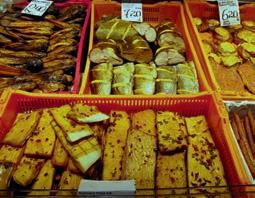
Commission’s sudden wish to revise derogations, granted to traditionally smoked meat and fish products that are intended for export to other Member States. The ministry is actively working to retain the currently enforced traditional smoking derogations for Latvia: traditionally smoked pig meat, hot smoked poultry,
hot smoked sausages and game, and traditionally hot smoked fish. Among the EU Member States, Latvia was the first to point out to the EC that it was not necessary to revise traditional smoking norms in respect of Latvian smoked produce “because consuming traditional smoked products does not harm human health.”
of Member States in each of three geographic regions: North Sea (Netherlands), Mediterranean (Greece), and landlocked (Austria), with a finished report in 2025. EUMOFA routinely collects and publishes a wide range of data on fish and aquaculture production, supply, prices, and many other variables for all 27 EU Member States.
The commission stated that it was already preparing a comprehensive report on fish consumption throughout the EU for Per capita consumption of fish and

publication in 2025, using data from the most recent Eurobarometer due by yearend 2024. The commission and MAC

agreed that EUMOFA’s report due in 2025 will be modified to include special analytical emphasis on the price structure
for pollock in France, Denmark, and Germany, as well as for clams in Italy, France, and Spain. This approach will balance the
analyses of different geographical areas for comparisons to be made, of the sort originally urged by MAC.
A financial aid package to improve the Spanish fishing and aquaculture sectors has been made available for distribution to qualified applicants, the Ministry of Agriculture, Fisheries and Food recently announced. The Spanish aid programme, funded by money from the EU Recovery, Transformation and Resilience Plan (PRTR), has an initial budget of 20 million euros. Successful applicants from the fishing and aquaculture sectors will receive financing of up to 50 of their investment projects to a maximum of EUR 5 million each, with the possibility of future expansion. The ministry hopes the funds will improve the competitiveness of Spain’s
industry, already one of Europe’s largest, in many ways. Modernisation through enhanced digitisation is a key goal, because of the potential for cost reduction. Costs can be reduced also by projects targeting energy efficiency and efficient water use. Other projects that will attract support include improvements in traceability, product packaging, and working conditions.
Sustainability throughout the sector, both environmental and economic, is an overall goal of the ministry’s assistance programme, in line with the priorities for all EU member states, while another objective is rural and coastal economic development.

The Ministry of Agriculture, Fisheries, and Food has announced a call for applications for funding. The aid aims to strengthen the processing industry for fishery and aquaculture products. The initiative is aligned with the recovery, transformation, and resilience plan, and is financed through the “Next Generation” EU funds.
Many Russian products continue to be imported into the EU, including many fish and seafood products, despite pressure on EU and member state governments to widen existing sanctions preventing such imports. Among fish products, only crustaceans, caviar, and caviar substitutes have been effectively banned since sanctions were applied in April 2022, following Russia’s invasion of Ukraine. Efforts to broaden the EU ban to cover all Russian seafood, however, face opposition in some Member States that have consumers and processors who rely on—or at least prefer— fish from Russia. Importers of fish that is available from non-Russian sources, such as Pacific cod
and Alaska pollock from North America, continue to prefer Russian product mainly because of its lower price compared to other sources. There are no fish products imported from Russia that cannot be imported from elsewhere; the second largest source of EU imports of Alaska pollock, for example, is the United States.
Germany is the EU’s largest importer of Russian fish and seafood. Reports state that as much as 85 of Alaska pollock imported by fast food chains in Germany comes from Russia. German industry representatives claim that there is no short-term alternative to these products from Russia. However, there are

Alaskan pollock is the second-most popular fish consumed in Germany after salmon. The proposed ban could harm the country’s food sector creating shortages of fish fingers and threatening about 1,000 jobs.
several other countries that harvest and process this North Pacific resource. Over many years, Alaska pollock and Pacific cod have replaced Atlantic cod in the fast food trade because of a substantial price differential: Atlantic cod is traded on a price-per-pound/ kg basis and the Pacific alternatives are so inexpensive that they are priced on a per-tonne basis. It is not that there is “no alternative“ to Russian fish products; it is

that there is no inexpensive alternative to Russian fish products. Another complicating factor is that Russian fish enters the EU either directly or through third countries including China, Norway, and the Faeroe Islands. If sufficiently processed in these countries, the products’ country of origin legally changes from Russia to the processing country. Widening the ban would help prevent EU imports of all Russian fish, regardless
For years AlgaEurope has been one of the most global conferences about science, technology and business in the algae biomass sector. The events are a unique opportunity to learn and understand all about algae production and commercialisation and interact with over 400 key players from more than 40 countries. The conference programme is designed to provide a comprehensive overview of the algae industry, from the latest research to practical applications in the marketplace. With a diverse range of sessions, attendees can learn from experts in the field, network with industry professionals, and stay up-to-date
on the latest developments in the algae biomass sector. Apart from the extensive conference programme, there are many networking opportunities such as the trade show, coffee and lunch breaks and the conference dinner.
This year, a new format called Industry Insights has been launched. This marks a significant shift towards enhancing industry engagement. The decision to launch Industry Insights underscores the organisers’ commitment to increasing exposure and opportunities for industry players. Recognising the pivotal role of industry collaboration in
haven’t
Fish farms have long been thought to run the risk of sea lice outbreaks because of the tight proximity of fish in closed settings. But new results from the British Columbia salmon farm association puts that link into question. Farm closures in recent years, the association says, have not reduced infestations of the parasite that has been responsible for mortality in both
farmed and wild fish populations. It is the wild population’s health that has been the driving force behind farm closures, as escapes of farmed fish are believed to transmit the parasite into the wild. Research into wild populations of Pacific salmon shows that sea lice infestation among these populations has not changed in the last 20 years, the association reports,
of its multi-country route. But feasible solutions to such complications—such as further defining an imported frozen block of fillets to include the raw material’s original source—require changes in trade law that must be approved unanimously by the European Parliament.
Germany’s initial reluctance to block Russian fossil fuels because of its economic dependence on
those imports was more significant than any proposed action on Russian fish, but fish provides a similar example of instances where Parliamentary action requires unanimous support by all countries, despite differing economic costs paid by different countries to undertake the Parliamentary action. Parliament has not yet officially received the proposal but background discussions are underway.

driving innovation and progress within the algae sector, this new concept aims to catalyse partnerships, exchange expertise, and foster a culture of innovation. For more information visit https:// algaeurope.org/industry-insights/ or write to info@dlg-benelux.com.
More information about AlgaEurope 2024 at www. algaeurope.org

even though multiple arms were shut down between 2019 and 2023 because of opposition from First Nations in the province. First Nations blame the farms for wild salmon population declines. The federal government has announced that all open net pen salmon farming in British Columbia must end by June 30, 2029.
A Canadian subsidiary of salmon farmer Mowi commissioned the research, carried out by a contractor, Mainstream Biological

Consulting, in the spring of 2024. Sampling of juvenile chum and pink salmon on their way to sea was conducted in areas near former farms and based on historical sampling in the areas. The finding that the closures have no impact on sea lice in wild populations is consistent with a 2023 report from the Canadian Science Advisory Secretariat (CSAS) and long-term data collected annually in the Discovery Islands—an area in British Columbia where salmon farms have been removed by the federal
government—also concluded that sea lice on farm-raised salmon do not impact sea lice levels on wild juvenile salmon.
Brian Kingzett, executive director of the BC Salmon Farmers’ Association, said that the continued exaggeration of wild salmon populations declining due to sea lice from salmon farms does not help conservation efforts of wild salmon. Ongoing research and data support that the salmon farming sector poses minimal
risk to wild Pacific salmon, yet government decisions continue to ignore the science and threaten the sector’s future. He added that BC salmon farmers support wild salmon restoration, climate action, and food security and that it was time for the federal government to stop using salmon farming as a scapegoat, making unrealistic and unachievable political decisions about our sector, and focus on reliable data and science to address the real issues impacting wild Pacific salmon.
A conference on "Ways to a Circular Economy" was held in Madrid on September 25-26. It was organized by the Ministry of Agriculture, Fisheries, and Food in collaboration with Eurofish International Organisation. The event attracted about 200 participants from 29 countries, and featured key discussions on the decarbonisation of the fishing fleet, as well as on managing side and waste streams in both aquaculture and fisheries. The conference highlighted the critical importance of energy transition and circular economy strategies to the long-term competitiveness of fishing and aquaculture businesses. By adopting these approaches and moving from a liner to a circular way of production, companies can reduce their operational costs, improve profitability, and enhance sustainability while reducing dependency on fossil fuels and avoiding wastage of resources. Various sessions demonstrated cost-effective technologies that simultaneously benefit both the fishing industry and the environment.
In the session on fleet decarbonisation, discussions emphasised the need for hybrid solutions to enhance the decarbonisation of fishing fleets, the importance of

The international conference on circularity in the fisheries and aquaculture sector organised by the Spanish Ministry of Agriculture, Fisheries, and Food in collaboration with Eurofish International Organisation attracted almost 200 participants from 30 countries.
political decisions to strengthen this evolution, and the significance of stakeholder engagement and training programmes for all involved. The aquaculture session highlighted as this sector as having significant potential for industrial symbiosis, creating opportunities through the efficient use of side- and waste streams. However, challenges
persist, including navigating complex legislation, obtaining necessary permits, and fostering cooperation between stakeholders. Investment is needed, but trust and transparency are essential for success, as well as for effective private-public collaborations. The importance of stakeholder engagement and consumer confidence was underscored,
alongside opportunities for utilising waste and by-products in various businesses and optimizing supply chains to meet the needs of a growing global population. The conference concluded with the reminder to focus on holistic, sustainable approaches that benefit the overall industry but, at the same time, not to over-engineer solutions.
Aquaculture Congress, 28-29 June 2024, Athens
Aquaculture in Greece saw significant expansion beginning in the early 1980s. Initially, aquaculture contributed a mere 2% (2,000 tonnes) to the country’s total fishery production, while capture fisheries dominated with 98% (105,651 tonnes). Over time, this distribution shifted. In 2003, aquaculture production surpassed that of traditional fishing methods, and as of today, aquaculture represents about 70% of Greece’s domestic fish production, with capture fisheries accounting for the remaining share.
The year 2022 brought new challenges for the sector.
While consumption levels rebounded to pre-pandemic figures, the industry encountered significant hurdles, including an unprecedented energy crisis that impacted production and supply chains, the ongoing war in Ukraine, soaring production costs, increasing interest rates, and the highest inflationary pressures seen since the 1970s. Despite these difficulties, the industry successfully maintained production levels and continued to supply markets effectively.
The 3rd edition of the Aquaculture Congress, titled “Defining a Resilient Future”, was organised by AMBIO S.A., one of the oldest consulting firms in Greece, with the support of the Hellenic Aquaculture Producers Organization (HAPO) and the scientific support of the Agricultural University of Athens. The event was held under the auspices of the Ministry of Rural Development and Food, the Ministry of Environment and Energy, and the Ministry of Development.
The congress saw an attendance of 530 people on the first day and 380 on the second day, in

addition to 140 participants who followed the proceedings online.
The international character of the Congress was highlighted by the presence of 78 speakers from 14 countries: Greece, India, Great Britain, France, Norway, Germany, Denmark, Spain, Iceland, Israel, Italy, Belgium, Portugal, and the USA. Additionally, 35 sponsored exhibition stands from 11 countries were set up in the foyer of the concert hall.
India was the country of honour, while H.E. Xiao Junzheng, Ambassador of the People’s Republic of China, delivered a welcome address. A delegation from the Somali Ministry of Fisheries and the Blue Economy participated, along with a large contingent from the United Arab Emirates.
The congress was attended by notable figures including Costas Tsiaras, the Minister of Rural Development and Food; Theodoros Skylakakis, the Minister of Environment and Energy; Adonis Georgiades, the Minister of Health; Nikolaos Papathanasis, the Deputy Minister of National Economy; and Christos Kellas, the Deputy Minister of Rural Development and Food, as well as members of political parties.
Executives from the Ministry of Finance, the Ministry of Environment & Energy, the Ministry of Rural Development & Food, the General Secretariat for Research & Innovation, and the Agricultural University of Athens were also present. Representatives from the Hellenic Centre for
Marine Research, the Hellenic Organisation of Aquaculture Producers, and various European public bodies and institutions also attended, including DG-Mare, the General Fisheries Commission for the Mediterranean (GFCM), the Federation of European Aquaculture Producers (FEAP), and the Spanish Aquaculture Business Association (APROMAR).
The four sessions on the first day of the congress focused on investment and funding of the sector, climate change issues, fish health, and market trends for farmed fish and seafood. Four workshops on the second day of

WE BUILD YOUR SOLUTION





With decades of experience, we have established as a top leader in the development and construction of premium installation systems for the food industry.
Our tailor-made solutions help you to shorten production processes, save energies and maximize the quality of your fish products. You can dry, smoke, cook and cool your products in our premium technology systems. Whether hanging or lying fish productswe have the perfect solution for your requirements.
In addition to our individual system solutions, you also benefit from our comprehensive range of services. Use our customer center for product development and tests, receive technological support from our specialists, benefit from flow simulations or make use of maintenance, conversions, and our classic spare parts service.
You want to know more about our systems? Then let’s get in touch and raise your fish processing to a new level together!
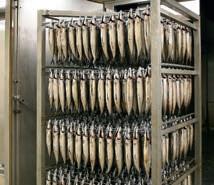
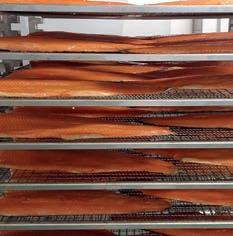
the event included topics on the policy in financing, fish health management, innovations in fish farming, and sustainable development of the sector. The twoday event concluded that despite the challenges, the industry remains dynamic, strengthened by recent crises, and ready for future advancements. Emphasis
was placed on the urgent need to resolve spatial planning issues, complete the approval of PDOs (protected designation of origin, an EU geographical indication), and improve communication and cooperation between sectoral bodies, companies, ministries, regional and local authorities, and local communities.
The adoption of advanced technological solutions and applications in production was noted, as well as the investment community’s interest in Greek fish aquaculture, which continues to lead Mediterranean fish production in the EU. The participation of numerous exhibitors from different sectors highlighted the positive impact of
aquaculture on other areas of the national economy. The Aquaculture Congress 2024 proved particularly significant for the Greek aquaculture industry, serving as a catalyst for stakeholder interaction and promoting responsible and innovative practices to ensure a sustainable and resilient future for the sector.
The AQUA events held every six years are co-organised by the European Aquaculture Society (EAS) and the World Aquaculture Society (WAS), and combine a conference and a trade show. The first AQUA was held in Nice in 2000—almost a quarter of a century ago. The fifth edition of AQUA, this time held in Copenhagen, attracted over 3,684 attendees from 103 countries to the conference and hosted over 235 exhibitors.
Comparing what the aquaculture sector was then and now, Alistair Lane, Executive Director of EAS, explains that greater knowledge and improved technology have driven development over the last two decades; “twentyfive years ago we didn’t really know what we were doing. We could produce fish, but we lost a lot of fish. Production was not linked to market demand, and therefore we had boomand-bust cycles in practically all species across Europe. One of the biggest changes over the last 25 years has been progress in understanding fish nutrition and biology, and the second is combining nutrition with breeding because nutrition and genetics go hand in hand. The other area that has rapidly developed is technology—and this combination of knowledge and technologies allows us to understand what is happening, to predict the outcomes of our production cycles. A quarter century ago we did not have that power of prediction.”
According to FAO, the world’s aquaculture production volumes over the past three decades have shown a three-fold increase, reaching over 120 million tonnes in 2020, the latest available year. Fish farming plays an increasing role in global food security, and the countries that have historically had a fishing industry, have also jumped on the aquaculture train. Such growth and change of mindset would not be possible without technology going hand in hand with production, and technology has made a big step forward, focusing on sustainability, efficiency, and quality. Over the past 25 years, aquaculture has experienced significant growth and transformation, driven by advances in technology, sustainability practices, and market demand.
“We have experienced that on the aquaculture side everything is just getting bigger and bigger, says Peter S. Rasmussen, CEO and

owner of Denmark-based IRAS. His company produces pumps, grading machines, distribution, and ice-handling systems, among others, for both fishing and aquaculture, and sells the equipment worldwide. “The farmers want larger machines, higher capacity, more output, and at the same time they want their production sites to consume less energy. continues Mr Rasmussen. The environmental issues are getting more and more complex because bigger systems normally require more power, and we have to come up with solutions that require less energy and are less stressful for
the fish, in line with the needs of the industry.”
Continuous innovations to meet the evolving needs of fish farmers worldwide is, by far, the most important concept that was reiterated through all the booths at the AQUA 2024 trade fair.
Virtual reality will enhance the efficiency of education in aquaculture—just don’t look down!
Like in many businesses worldwide, the ageing of aquaculture
professionals represents one of the biggest problems in the sector. New generations are expected to bring fresh blood to the industry but getting them hooked requires a modern approach and advanced technologies. In this view, virtual reality (VR) seems to be the proper gear.
The shiny mirrorlike cabin of ARC—Aquaculture Remote Classroom of Ireland’s Seafood Development Agency (BIM)— could not be passed by unnoticed by any attendee at AQUA 2024. Funded by the EU, the project provides outreach to schools across Ireland through different activities that are focused on socio-economics, geography, history, biology, health, nutrition, and sustainability, also showcasing how the country’s natural resources can provide jobs for the community.
“We try to make it as interactive as possible so the learning for the kids is just as good as it can be”, explains Hugh Boyle, ARC Project Facilitator. “We have VR headsets which are probably the biggest draw for the kids, and they can see how the three of Ireland’s most farmed species are grown.” A fiveminute video with a 360-degree view allows the children to fly with a drone over a mussel farm, be on the floor of an oyster farm, and even see how salmon is farmed from inside a cage! The latter part is the trickiest: “We tell the kids to stay in their seats and keep their arms to themselves because many kids try to grab the salmon and lean forward so much that they fall out of the chairs”, smiles Mr Boyle, “so that happens a little bit, and it always gets a good chuckle.”
But it is not only the kids who get excited with VR. Aquaculture Welfare Standards Initiative
(AWSI) based in Kiel, Germany, offers training VR software to adults. AWSI was set up in 2016 as an open sectoral group of farmers, retailers, certifiers, economists, and scientists aiming to implement minimal welfare standards in fish and shellfish aquaculture. By 2020, 12 recommendations had been developed and approved by Global G.A.P., Naturland, ASC, and Eco. “We had to get farms interested in being certified according to these recommendations”, says Stefan-Andreas Johnigk, the project leader. “We had to transfer knowledge, teach people to perform better, avoid stress and hygienic risks, avoid losses and low product quality.” But the pandemic struck making it impossible to go on-site to do the training. AWSI had to find a solution and do the training as if the people were at the location.”
Developing VR software was the best solution to the problem, and now several learning modules are available, including ones on pre-sorting, stunning, and slaughtering carp and trout.
The material is available in German and English, and other language versions are underway. The modules are free for AWSI members. While membership is also free—you must have a VR headset (or buy one from AWSI). One may ask, why not use online presentations or videos instead?
But some of the content, like stunning and slaughtering, is visually sensitive, so access to it must be limited.
It is like a walking classroom, explains Mr Johnigk, but we advise all the trainees wearing VR headsets to turn around using all the body, not just the neck, and to keep looking straight—if you look down, you can easily topple over!”
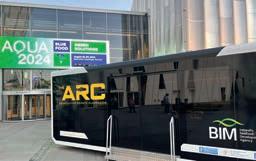
The cabin drives around the country and it takes only 20 minutes to bring it “from the wheels” to full operational condition, the capacity is up to 30 kids at a time, has learning blocks for primary and secondary schools, and during six years of its existence, the total reach was about 44,000 children and their teachers.
"Eat less fishes!" Such a slogan would be the last thing one would expect to hear at an event like AQUA 2024. However, Swissbased fair-fish, an organisation for promoting the welfare of fishes in fisheries and aquaculture, insists that people should reduce fish consumption, especially in the west, where people do not rely on fishes in terms of food security.
Because the oceans are overfished, explains Yannick Rohrer, fish biologist at fair-fish, and the most popular species produced in western aquaculture are predators. We need a lot of wild fish to produce feed for this kind of fish farming, therefore salmon and trout are not going to feed the world. Instead, fair-fish takes the position that consuming species at lower trophic levels (e.g. carps, catfishes, tilapias) and using more alternative sources of protein and fish oil (plant protein, mushroom mycelium, insects and algae oil) in fish feed would be a good idea.
The organisation maintains the fair-fish database where available
scientific knowledge on fish welfare is compiled, processed into a comprehensive overview, and evaluated for the well-being of aquatic species in both aquaculture and capture fisheries. The database is available online for any concerned consumer—after all, responsible consumption is what the fisheries and aquaculture industry wants, no matter which direction the solution comes from.
The AQUA 2024 trade show provided a platform to exchange a wide spectrum of opinions— some opposing each other—and offered opportunities for collaboration among equipment manufacturers, fish farmers, and researchers for the future development of sustainable aquaculture practices worldwide.
Where the next AQUA takes place remains a mystery, but trust the organisers—they will find a place as enjoyable as Copenhagen. We just have to wait another six years—and we will!
Aleksandra Petersen aleksandra@eurofish.dk
AQUA 2024, 26-30 August 2024, Copenhagen
The AQUA 2024 conference and trade show is jointly organised by the World Aquaculture Society and the European Aquaculture Society and held once every six years. This year the host city was Copenhagen where an icebreaker was organised at the City Hall the evening before the event started.
Spread over four days, the roughly 1,000 interventions at the conference were categorised into numerous sessions, including selective breeding, climate change impacts, nutrition, diseases and welfare.
Among the many interesting and thought-provoking presentations was one by Heidi S. Mortensen, a Ph.D student at the Department of Biological and Environmental Sciences, University of Gothenburg, Sweden, who discussed the incidence of coronary arteriosclerosis in Faroese farmed salmon (Salmo salar). Well known among humans (coronary artery disease is the single leading cause of death in Europe and the most common type of heart disease in the United States), coronary arteriosclerosis also affects salmon. The hardestworking muscle in the body, the heart, needs its own supply of blood to enable it to carry out its function. This blood supply is provided by the coronary circulation that sends blood through the coronary arteries that surround the heart thereby ensuring the heart tissue get the nutrients it needs. If this supply is constrained it can reduce the heart’s performance, potentially cause permanent damage to the heart, or even result in death.
Fish species like Atlantic salmon and other salmonids also feature coronary circulation which supports their highly active lifestyles and demanding swimming behaviour. Ms Mortensen demonstrated that coronary arteriosclerosis was highly prevalent in Atlantic salmon, with ubiquitous lesions in sexually mature individuals. The lesions are found in both wild and farmed individuals and start forming before maturation but increase in severity as the fish get older, she said. In sexually mature fish the lesions are found in almost all individuals. She pointed to rapid growth at elevated temperatures as one of the contributing factors as fish reared in these conditions had a higher prevalence of lesions than fish of the same age but grown more slowly. In salmon the narrowing of the coronary arteries is caused by the proliferation of smooth muscle cells inside the artery. The effect of the condition is reduced aerobic performance, Ms Mortensen said, and cited studies in which salmonids with surgically occluded coronary arteries showed lower tolerance to warming and hypoxia, and increased susceptibility to stress from crowding. They also showed abnormalities in their electrocardiograms indicating problems with the heart. Her findings are highly relevant to salmon farming practices today as fish are subjected to stressful procedures
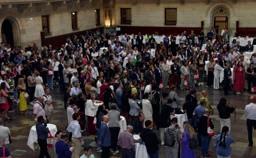
including transport, delousing, and crowding.
The study was conducted on the Faroe Islands, where Ms Mortensen works, and involved 280 salmon hearts taken from three farming companies and five sites. Half (140) the samples were taken one month after transfer to the sea and the other half one month before slaughter. In addition, 18 cross sections of the main coronary artery were examined and scored based on the severity of the lesions. The prevalence of lesions was determined by examining the fish and also examining along the coronary artery, while severity of the lesions was calculated using
the lesion severity index, which is the mean of all scores above zero, using a scale of 0 to 5, where 0 represents no lesions and 5 denotes severe lesions. Furthermore, the researchers looked at the lesion that was most severe for each individual and calculated the reduction in the arterial area.
With regard to prevalence, in the initial samples lesions were found in 23-67 of all the fish examined at the different sites, while the next samples taken 10 months later showed lesions in 90-100. Similarly, lesions in the coronary artery increased from 5-25 of the sections in the first samples to 69-97 of the sections in the second. Regarding the severity of the lesions, in the first samples the mean lesion score was 1.7 to 3.0 while in the next samples this had increased to 3.5 to 4.0. The
reduction in volume in the coronary artery went from 4.4-14 to 14.5-20.
Ranking the sites by prevalence and severity of arteriosclerosis revealed a surprise. While fish from one of the sites were the worst affected one month after sea transfer, 10 months later it was those from another site that were the worst affected. Further analysis showed that it varied significantly between sites how old the fish were when they were transferred to the sea. From this the researchers concluded that age influences arteriosclerosis in fish with older fish tending to have more lesions. They also compared fish of the same age at two sites, where those from one site showed a higher incidence of lesions compared to those from the other. This established that rapid growth was the culprit as the fish with the lower incidence of lesions were similar in size to fish that were six months younger. As Ms Mortensen pointed out, this work can contribute to improving fish welfare which will ultimately create a more healthful product for the consumer.
Like other vertebrates, including humans, fish release the steroid hormone cortisol into the blood when stressed. Small amounts diffuse into the surrounding water mostly through the gills. This waterborne cortisol (WC) can potentially be used as an indicator of welfare, reported Dr Manuel Gesto, a senior researcher at DTU Aqua’s National Institute of Aquatic Resources. He reminded the audience that the perfect indicator for fish welfare did not exist and that most farmers relied on integrating the information from several indicators to piece together a picture of the fish’s wellbeing. These indicators can describe the conditions the fish are living under (environmentbased) or can provide information about the fish (animal-based). The ideal indicator, he said, would provide direct information about the fish, be cheap and easy to measure, could be monitored continuously, and provide an early warning of problems in the system. Dr Gesto proposed that WC could be such an indicator since it signals stress in the fish


and would also be non-invasive, which is why is it popular both in fish stress research and in general fish research. However, the drawback to WC, he pointed out, is that it is a laboratory-based welfare indicator, meaning that it takes time to analyse samples and determine the levels of cortisol. This prevents the continuous monitoring of cortisol levels in the water. The significance of continuous monitoring is that it creates a context—it demonstrates the normal variability of cortisol levels and shows whether the levels are stable, increasing or decreasing.
Highly sensitive devices are being developed but more questions remain
A cortisol sensor would be a way around this as it would constantly
measure the levels of cortisol in real time. While such devices exist for human samples they have not yet been developed for the fish farming industry. The reason could be one of sensitivity since cortisol levels in aquaculture facilities are in the range of picograms (10-9 g) per millilitre, which is around 1,000 times less than found in biological samples. Dr Gesto said that new sensors were starting to appear that were extremely sensitive. These could detect levels of cortisol in the range of a femtogram (10-15 g) per millilitre which are far lower concentrations than seen in an aquaculture facility. While it may soon be possible to accurately measure cortisol levels in the water, its presence there depends not only on its production by the fish, but also on the permeability of the gill to


cortisol. Moreover, these levels are also influenced by how the system handles the water. Flowthrough systems, for instance, handle the water very differently from recirculation aquaculture systems, not to speak of open cage systems, and cortisol levels will depend on several factors including water quality (salinity, pH, temperature, microbial load, particles etc.) as well as the design, operation, and components of the system. Another issue is the correlation between the rate at which cortisol is released into the water and the level of cortisol in the fish plasma and whether this is a linear relationship. Dr Gesto said that this in fact was not the case at least not in all circumstances as there were factors (specifically cardiovascular activity) beyond the plasma cortisol levels, which had an impact on the release rate. Finally, Dr Gesto pointed to the lack of data from fish farms about the normal variability of these cortisol levels. These could change depending on the time of day, the season, and the size of the animals among other factors. Without knowing this variability, it would be impossible to tease out the effect of the stressors. Ending his intervention, he said that while a sensor sensitive enough to accurately measure WC is highly desirable, much research remains to be done before it can be concluded that WC is a reliable indicator of welfare in farmed fish.
Mislabelling fish has significant economic consequences
In the session on value chain economics, Prof. José L. Fernández Sánchez, Department of Business Administration, University of Cantabria, presented his work on the economic impact of fish mislabelling in Europe, which is part of a project named Smart Food Print and is funded by the
Spanish Ministry of Science and Innovation. Mislabelling can have consequences for human health, the society, environment, and the economy. It may be deliberate or unintentional and can relate to the product’s origin, weight, species, or other characteristics. Even whole fish of different species may be difficult to distinguish from each other, let alone fillets, and when experts are not always infallible, ordinary consumers stand little chance of detecting mislabelling. Prof. Fernández Sánchez’ work focused on mislabelling of species, one of the practice’s most common forms thanks to the inability of consumers and other is in the value chain to discriminate between similar looking species. This creates an economic incentive to sell cheaper fish as high value ones. Prof. Fernández Sánchez’ suggested three main factors that influence the decision to cheat: the low risk of detection; the small penalty for cheating; and the potential for high rewards. He also mentioned the economic consequences of mislabelling including the loss of revenue for the state from import duties and taxes and the impact on consumers who pay a higher price than they should. The issue is complex, but there is only a small body of research in this area, and this is something that should be remedied. Professor Fernández Sánchez identified 29 papers from Europe in the literature that he subjected to analysis together with eight papers from the US that were used to compare the European data. The analysis looked at five main commercial species, flatfish, gadoid (cod-like species), scombroid (tuna, bonito), small pelagic (anchovy, sardine), and salmonid (salmon, trout). The results showed that mislabelling rates were generally higher in southern European countries than in the north and in Europe as a whole mislabelling rates were

Waterborne cortisol in fish tanks is a potential indicator of stress in the fish, but more research is required to prove this.
highest among gadoid and scombroid species. In the case of salmonids, of all the 16 European countries considered, Spain was the only one from which there were data indicating that more analysis for this group of species is needed.
Gadoid species were the main fresh fish consumed in the nine European countries under consideration between 2013 and 2023 accounting for 37 of consumption (by volume) of all the five groups, with salmonids in second place at 19. Combining the value of consumption with the mislabelling rate provided an estimate of the economic value of mislabelling by country and by species group. This varied from EUR169m for gadoids to EUR14.5m for small pelagics and summed to a total of just under EUR300m for all countries and species groups. Spain suffered the highest economic impact despite having a low mislabelling rate because fish consumption is high. Professor Fernández Sánchez went on to caution that EUR300m was a very conservative estimate as there were no data in many cases to improve it. Comparing mislabelling rates by distribution channel revealed that the situation was worst among wholesalers, where the rate of
mislabelling was 41 as opposed to among fishmongers where it was 11. In general, mislabelling decreased over time, with rates in 2023 being roughly 30 lower than in 2005, which he attributed to greater awareness of the issue among administrations. He also noted a correlation between the unit price of fish and the mislabelling rate though only after excluding the UK and the Netherlands. In both countries fish prices are high and Professor Fernández Sánchez postulated that mislabelling in these two countries was tightly monitored, penalties were stringent, and there was a high degree of awareness along the different links in the value chain. This made them outliers and by excluding them the correlation between high prices and mislabelling in the remaining data became apparent. However, more analysis is necessary to substantiate this hypothesis, he said. Hopefully further studies will result in policies that can reduce the incidence of mislabelling, from which both the state and consumers will benefit.
The diversity of presentations at AQUA 2024 is impossible to encapsulate in one or two editions of the Eurofish Magazine. The December edition will feature a review of more of the interventions made at AQUA 2024, specifically of some of those made at the fish and light session.

Seagriculture EU 2024, 18-20 June, Tórshavn, Faroe Islands
The Seagriculture conferences act as a driving force for innovation, collaboration, and knowledge sharing, fostering advancements in the seaweed industry. By uniting a diverse group of stakeholders, the conference has sped up the adoption of sustainable practices, promoted market expansion, and highlighted seaweed as a vital solution to global climate challenges.
Under the theme “Bridging Continents,”
Seagriculture EU 2024 brought together 224 delegates from 25 countries around the globe. Representatives from more than 123 companies and institutions engaged in discussions, networking, and knowledge sharing, underscoring the global interest in seaweed farming and its diverse applications.
Seagriculture EU 2024 began on 18 June with a site visit to Ocean Rainforest, one of the largest seaweed cultivators in Europe, that has approximately 200,000 meters of seeded seaweed lines across some 220 hectares. Delegates were offered a firsthand glimpse into the company’s operations with experts from Ocean
Rainforest guiding them. Participants were treated to a boat journey to explore the cultivation site in Gøta more closely and witness seaweed being harvested, the production and hatchery facilities, as well as a visit from land to other cultivation sites in Funningsfjørð. The conference organisers received overwhelmingly positive feedback from the delegates about this unique site visit.
From 19 to 20 June, the Seagriculture EU 2024 conference unfolded with a dynamic programme featuring five plenary sessions, two panel discussions, and the newly introduced Seaweed Elevator Pitches. This innovative format allowed for the rapid coverage of numerous


Eurofish partners with stakeholders in its member countries and beyond executing projects for the development of fisheries and aquaculture.
Team up with us by contacting projects@eurofish.dk or visit eurofish.dk/projects for more information.

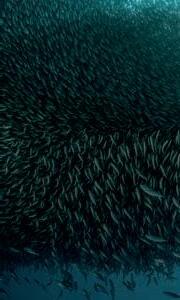





projects. With nearly 50 speakers participating, including international experts from DG MARE, FermentationExperts, Unilever, Cargill, and Future Feed, attendees heard diverse perspectives on seaweed farming, innovations, and regulations.
Within Seagriculture EU 2024 the organisers introduced the B2Match conference application, providing participants with an efficient way to communicate, schedule meetings, and stay updated on the latest news. The app facilitated more than 160 meetings, helping delegates build new connections and partnerships, and ensuring a seamless and engaging conference experience.
Among other highlights of Seagriculture EU 2024 was the trade show where some ten leading exhibitors showed their latest technologies and equipment. The show and networking event was excellent, with attendees eagerly engaging with exhibitors. The trade show tabletops were well attended and many conference delegates engaged in instant networking and lively exchanges, reflecting the event’s dynamic and interactive nature.
Kuno Jacobs, Managing Director of DLG Benelux, the conference
organiser, felt the enthusiastic participation of seaweed professionals, researchers, and policymakers underscores the growing recognition of seaweed as a crucial component of a sustainable future. He highlighted the growing number of delegates, not only from the seaweed and aquaculture industries, but also from the feed and food industries and related sectors each year. This diversity highlights the importance and relevance of the conference in addressing broader sustainability challenges, he said. He warmly acknowledged the Faroe Islands as host nation and Ocean Rainforest for making the site visit a memorable experience.
In addition to enriching the conference with valuable knowledge and insights, Seagriculture
EU 2024 also provided an authentic experience of Faroese culture. After the first conference day, various Faroese companies offered some seaweed bites during the seaweed tasting. And at the conference dinner delegates enjoyed a performance by the national choir.
EU 2025 will be held in Rotterdam, the Netherlands, 17 - 19 June 2025
For more information on the conference, the organisers, pictures, contact details of speakers for interviews, applications for press passes and barter deals, refer to www.seagriculture.eu or write to info@dlg-benelux.com.
Holder of the EU Presidency, Hungary, coordinates joint EU position at COFI
The 36th session of the Committee on Fisheries (COFI) of the Food and Agriculture Organization of the United Nations (FAO) took place from July 8-12 July 2024, in Rome, Italy. This biennial, high-level international event plays a vital role in managing global fisheries and aquaculture trends while promoting cooperation on critical issues such as food security and sustainable resource management.
Hungary, which holds the current Presidency of the Council of the European Union, played an important mediating role during the meeting. The Hungarian delegation, led by Mr Bence Dániel Kovács, EU Fisheries and Aquaculture Adviser from the Ministry of Agriculture, included high-level officials such as Ambassador Zsolt BelánszkyDemkó, Permanent Representative of Hungary to the United Nations in Rome; Ambassador Zoltán Kálmán, Former Permanent Representative of Hungary to the United Nations in Rome; Ms Evelin Lantos, Head of Unit for FAO and Development Projects at the Ministry of Agriculture; Ms Loretta Kósa, Agricultural Attaché at the Hungarian Embassy in Rome; and Ms Liliána Kaszás, FAO Coordinator at the Ministry of Agriculture.
Sustainable practices critical for aquaculture to realise its potential
The Hungarian Presidency Team was responsible for coordinating the diverse interests and priorities of EU Member States. Acting as mediators, they fostered open dialogue to ensure that all voices were heard, leading efforts to create a unified EU position. This is particularly important in areas
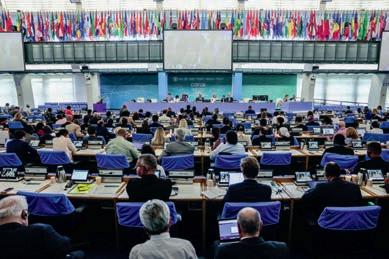
FAO’s Committee on Fisheries (COFI) is global inter-governmental forum that provides periodic global recommendations and policy advice to governments and other bodies. Pictured, the opening of the 36th session of COFI held at FAO Headquarters in Rome in July this year.
such as sustainable fisheries and aquaculture, where a coherent EU position is essential to influencing global policies effectively. According to the 2024 edition of The State of World Fisheries and Aquaculture report, global aquaculture production has surpassed capture fisheries, for the first time, in aquatic animal production. This milestone underscores the urgent need for sustainable practices to ensure that aquaculture
can meet future food security challenges and contribute to achieving the Sustainable Development Goals (SDGs).
One of the session’s key achievements was the adoption of the Guidelines for Sustainable Aquaculture , developed by the FAO Sub-Committee on Aquaculture in line with the Blue Transformation roadmap. These guidelines prioritise promoting best
practices, securing investments, building capacity, and supporting small-scale producers— areas also critical for growth and resilience in the EU’s aquaculture sector. The meeting also reinforced FAO’s commitment to improving biosecurity, combating antimicrobial resistance, adapting to climate change, conserving biodiversity, and improving value chain and water resource management to ensure
that aquaculture practices meet high international standards. By integrating these progressive strategies, FAO member states are poised to advance the competitiveness of their aquaculture industries.
Hungary’s commitment to global aquaculture development strengthens its role at COFI
In conclusion, the EU—and the Hungarian Presidency, which has chosen aquaculture as one of its priorities—has reason to be satisfied with the
outcomes of the 36th COFI session. The productive discussions not only reaffirmed the EU’s commitment to advancing aquaculture and fisheries management but also highlighted the Council Presidency’s important role in facilitating consensus among Member States. Hungary’s active engagement in global aquaculture development underscores its dedication to influencing future policies in alignment with the SDGs, demonstrating a strong commitment to shaping a sustainable and resilient future for the global aquaculture sector.








































Microalgae in feed bring nutritional and health benefits to fish
By reducing the carbon footprint of high quality fish feed, Algiecel, a company based in Odense, Denmark, is at the forefront of leveraging the potential of microalgae to achieve greater environmental sustainability. Using sustainable algae biomass the company aims to reduce the environmental impact of industrial high-quality fish feed while still maintaining nutritional and health benefits.
Microalgae have gained considerable attention for their role in carbon capture and their ability to convert CO2 captured from biogas emissions into valuable biomass. Algiecel’s uniquely designed photobioreactor represents a closed-loop system where waste CO2 molecules are repurposed into high-value products, contributing to both environmental sustainability and economic efficiency. Biomass produced from microalgae is versatile, with applications in everything from animal feed to food and even algae oil for cosmetics. This approach not only helps reduce greenhouse gas emissions, but also creates a sustainable source




























The microalgae Nannochloropsis oceanica is a source of healthful fats and proteins and other useful ingredients for humans and animals.
of biomass. Algiecel has selected Nannochloropsis oceanica as its initial production strain due to its rich profile of omega-3 fatty acids, high protein content and other beneficial compounds, including antioxidants that are documented immune-boosting agents in certain fish species. Numerous studies have highlighted the positive effects of Nannochloropsis oceanica on the immune system and stress tolerance in various fish species. These qualities make it an ideal candidate for both aquaculture and human nutrition ingredients.
Despite its promise, microalgae production faces several
technical and economic challenges that must be overcome to achieve large-scale adoption. One of the primary technical hurdles is optimising growth conditions for different algae strains. Phototrophic microalgae require specific light, temperature, and nutrient conditions to thrive, and these parameters can vary significantly depending on the species being cultivated and the intended application of the biomass. Another challenge is the cost of production. While microalgae can produce a high yield of biomass, the costs associated with maintaining optimal growth conditions, harvesting, and processing the algae can be prohibitive. This is where the company’s modular and scalable photobioreactors could make
a significant difference. These systems are designed to cultivate microalgae efficiently, with a focus on minimising the carbon footprint of production and making it easy to move from source to source. The idea behind mobile photobioreactors is simple yet revolutionary: instead of building large, stationary facilities, these units can be deployed close to sources of CO2, such as biogas plants or industrial sites, where they can capture CO2 emissions directly and convert them into algae biomass on site. This mobility not only reduces the infrastructure costs associated with algae production, but also enhances the scalability and flexibility of operations. By being able to move to different sites, Algiecel’s photobioreactors
can adapt to varying production needs and environmental conditions, making algae cultivation more feasible in different geographic locations.
By utilising the CO2 that would otherwise have escaped into the atmosphere and linking the company’s system directly to wind and solar power, the photobioreactors can produce high volumes of algae-based biomass each day. The process begins with the reactor and a degasser unit, followed by an initial downstream processing step. Here, the algae are dried and preserved with careful attention paid to
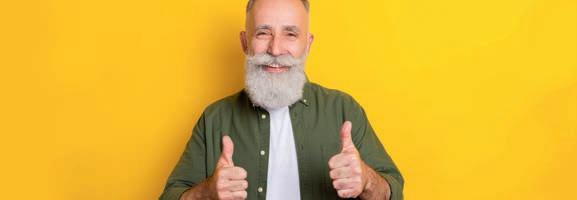


























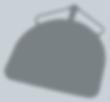
maintaining the quality of its fatty acids and to preventing oxidation. The next stage involves oil extraction, leaving behind a defatted biomass, which remains a valuable ingredient for the animal feed industry.
Nannochloropsis oceanica has emerged as a nutritionally dense component in aquafeed, driven by its high concentrations of omega-3 polyunsaturated fatty acids (PUFAs), particularly eicosapentaenoic acid (EPA). EPA is vital for fish, playing a critical role in membrane fluidity, inflammation modulation, and cardiovascular health, and can only be produced by organisms such as algae. This species also offers a complete amino acid profile, supporting protein synthesis, growth, and tissue repair. Additionally, Nannochloropsis oceanica contains significant levels of carotenoids, such as astaxanthin, which function as potent antioxidants, protecting cellular components from oxidative stress and further supporting cardiovascular function and overall health in fish. The high EPA content in Nannochloropsis
oceanica supports cardiovascular health by maintaining membrane fluidity, enhancing endothelial function, and reducing the risk of cardiac disorders. These benefits are particularly valuable in recirculatory aquaculture systems (RAS), where water quality and environmental factors can fluctuate, potentially impacting fish well-being. The high protein content, allows for high inclusion ratios without diluting the fish meal protein content, allowing for maximum growth potential of the fish. Incorporating Nannochloropsis oceanica into a RAS ecosystem, fish feed not only enhances the nutritional profile of the diet but also contributes to sustainable aquaculture practices by providing a renewable alternative to traditional fish oils, aligning with environmental and resource management goals in modern aquaculture.
The implications of Algiecel’s work extend far beyond the company itself. Microalgae have the
supplying algae biomass for aquaculture, Algiecel plans to develop algae oil for use in food and cosmetics. This diversification will allow the company to tap into the growing demand for natural, sustainable ingredients in various industries.
potential to address some of the most pressing challenges facing our planet, from climate change to food security. By providing a sustainable source of protein, omega-3 fatty acids, and other essential nutrients, microalgae could help meet the growing demand for food and feed in a world with limited resources— where this technology does not require high-quality farmland to be reserved. Looking ahead, Algiecel has ambitious plans for growth and expansion. Once the necessary regulatory approvals are in place, the company intends to scale up its production of Nannochloropsis oceanica and explore new markets for its products. In addition to
Helgavej 26 5230 Odense M Denmark
Tel: +45 2248 5667 info@algiecel.com algiecel.com
While challenges remain, from technical hurdles to regulatory complexities, Algiecel’s team is well-positioned to overcome these obstacles and lead the way in this rapidly evolving industry. The development of mobile photobioreactors is just one example of what is possible with microalgae. The focus right now is to go from pilot scale to prove the technology at industrial scale and prepare for full commercialisation. This includes a demonstration project with Novonesis in Kalundborg, Denmark (https:// www.algiecel.com/power-to-xis-more-than-fuel/) as well as product development for applications in pet food, food/dietary supplements and cosmetics. In a world where sustainability is increasingly at the forefront of business and policy, the company’s efforts to turn waste into wealth and reduce carbon emissions represent a crucial step towards a more sustainable and prosperous future.
CEO: Henrik Busch-Larsen Activity: Production of Nannochloropsis oceanica in mobile photobioreactors
As fish farming expands globally, ensuring its sustainability becomes ever more important
Sponges are a candidate for bioremediation in Integrated Multi-Trophic Aquaculture (IMTA). They can be used in aquaculture, as well as in cosmetic and pharmaceutical markets. Literature about sponges’ roles as effective filters in aquaculture and intermediates benefiting other trophic levels is increasing in volume. While sponges also encounter setbacks such as predation, fouling, and seasonal unpredictability, research continues to build a case for sponges as sustainable bioremediators.
Integrated Multi-Trophic Aquaculture (IMTA) is a sustainable form of aquaculture that raises organisms from multiple trophic levels to mimic an ecosystem. It is circular in nature, representing species that serve different ecological functions. “Fed” populations, such as finfish, aquatic plants, microbes, and more contribute to and benefit from each other’s natural biological processes. One attractive aspect of IMTA is its efficient and cost-effective waste management.
Could IMTA be the solution?
Standard aquaculture filtration systems are inconvenient due to maintenance costs and large size. They are often specialised, requiring multiple machines to accomplish different tasks, such as UV protection and particle removal. While recirculatory aquaculture systems (RAS) are a more sustainable solution for indoor aquaculture, they require substantial amounts of energy—and funding—to operate. There is hesitation, however, when considering IMTA. This method requires less energy, spending, and maintenance, but there is a
significant decrease in yield for fed fish compared to monocultures. With the recent 2024 State of World Fisheries and Aquaculture (SOFIA) report showing a record 51 of global seafood originating from aquaculture, the draw of raising monocultures grows stronger. In contrast, increasing unease over environmental health makes sustainability in this sector an even greater priority. The waste generated by aquaculture is of major concern; organic and inorganic waste, as well as unconsumed feed, are byproducts of aquaculture that accumulate quickly. When these byproducts dissolve in the water, the risk of eutrophication—the unchecked growth of aquatic flora due to excess nutrients in the water—increases exponentially.1
Oxygen levels and biodiversity decrease when a habitat experiences eutrophication, and the algal blooms that form on the water can be toxic. Furthermore, costs associated with managing this waste could rise with the implementation of more aquaculture systems around the world.
IMTA provides an opportunity to revisit how aquaculture can be

Most sponges have a robust water filtration system that may allow them to replace standard aquaculture filter systems in integrated multi-trophic aquaculture (IMTA). Shown, a yellow picasso sponge.
both profitable and sustainable. Each trophic level in IMTA has the potential to yield marketable products across multiple industries, including cosmetics, and pharmaceuticals. This may initially appear ambitious, but one type of organism not only tackles aquaculture’s waste management problem, but also lends itself to a diversity of products: the sponge.
Sponges, composing the phylum Porifera, are benthic filter feeders
1 A.B. Dauda, A. Ajadi, A.S. Tola-Fabunmi, A.O. Akinwole Waste production in aquaculture: sources, components and managements in different culture systems Aquac. Fish., 4 (2019), pp. 81-88, 10.1016/j.aaf.2018.10.002
that can survive a wide range of environmental conditions.2 There are over 5,000 known species within Porifera with species represented in all aquatic environments (freshwater, marine, brackish) and climates (tropical to polar). The distribution of sponges is vast both in geographical location and depth. Sponges vary widely in shape, size, and colour. They are soft organisms that also vary in complexity, yet most harbour a robust water filtration system.3
Sponges acquire nutrients from the water around them, consuming
2 NOAA. What is a sponge? National Ocean Service website, https://oceanservice.noaa.gov/facts/eutrophication.html, accessed on 7/03/24.
3 Amato A, Esposito R, Federico S, Pozzolini M, Giovine M, Bertolino M, Guida M, Manfra L, Libralato G, Zupo V and Costantini M (2024) Marine sponges as promising candidates for integrated aquaculture combining biomass increase and bioremediation: an updated review. Front. Mar. Sci. 10:1234225. doi: 10.3389/fmars.2023.1234225

Sponges are represented in all aquatic environments and climates. They acquire nutrients from the surrounding water filtering out the particles and returning clean water to the environment. Here, some large barrel sponges in the US Virgin Islands.
dissolved organic carbon, prokaryotes, and small plankton. Their large pores allow them to absorb particles between 0.1 and 50 µm. Water enters through the ostia— pores—and is directed by the choanocytes, cells equipped with flagella that circulate the water through the sponge. The water flushes through the circulatory system while particles are captured in a mesh-like collar for the sponge’s other specialised cells to process. Bacteria, microplastics, and more are absorbed by the sponge while clean water returns to the environment through the osculum.4
Sponges have been used by people for millennia with reports dating back to the Ancient Egyptians.5 Fisheries for sponges, too, emerged early in human history, with a widespread effort to culture them sprouting in the early twentieth century. Depending on the species, a mature crop can be harvested between nine months and seven years; sponges can either be sold or used to propagate the next
crop. Species within Porifera are generally hermaphroditic and are also able to reproduce both sexually and asexually. Because of their reproductive flexibility, range of habitats, and well-adapted nutrient strategy, sponges are easy to raise and do not require extensive aquaculture experience to start a farm.
IMTA requires that each trophic level can coexist successfully. This prompts the question: can sponges be used in IMTA? With 5,000 species comes great diversity, and there is little guarantee they are all compatible with other species in an IMTA system.
SPINAQUA, a three-year program based in Greece, endeavoured to confirm the utility of sponges in IMTA.6 The project pursued three key goals: investigate appropriate sponge species and their respective habitats for IMTA, evaluating the biotechnological potential of sponges, and analysing the
results of their experiment, which cultivated sponges near an open fish farm. Important findings from this project include efficient sponge filtration of biological and chemical pollutants found in aquaculture settings, anti-microbial activity in sponges against common human pathogens, and two species candidates for Greek sponge-inclusive IMTA.7
Another European Project based in Italy, RemediaLife, pursued evidence for effective bioremediation in IMTA from 2017 to 2021. Their bioremediation system employed multiple filter feeders at different trophic levels: annelids, molluscs, sponges, and macroalgae. One publication from the RemediaLife project demonstrated the bioremediation capabilities of macroalgae and sponges (Chaetomorpha linum and Sarcotragus spinosulus, respectively) when sharing a habitat with sea bass (Dicentrarchus labrax).8 The experiment ran for 96 hours, with 15 mL water samples retrieved at the beginning of the experiment and at 48-hour intervals. The experimental group, which included the sea bass, macroalgae, and sponges, consistently showed nitrate, ammonium, and phosphate levels lower than the control group, which only contained sea bass. The control group also saw an increase in ammonium levels, rising to 2.9 mg/L ± 0.5, whereas the experimental group maintained negligible ammonium levels below 1 mg/L. In terms of bacterial uptake, the experimental group tank showed significantly smaller abundance of both Vibrionaceae—bacteria associated
4 Rye, C., Wise, R., Jurukovski, V., DeSaix, J., Choi, J., & Avissar, Y. (2016). In Biology. OpenStax.
with foodborne human disease— and heterotrophic bacteria than the control group.
Other literature focuses on sponges as intermediate components of IMTA. It is a fresh perspective built on sponges’ ability to process dissolved organic matter, converting it to sponge biomass and food for other trophic levels.9 Growth rate is increased for sponges operating in environments polluted with dissolved organic material. When other organisms tap into the resources produced by the sponge, they continue to produce organic matter that the sponge synthesises and recycles. The uptake and processing of dissolved organic matter is shared amongst most, if not all, sponge species and could thus be applicable to many IMTA systems.
Most sponge aquaculture operates for the purpose of selling “bath sponges” and only recently have other industries turned their focus to the filter feeder. Modern cosmetic companies still advertise natural sponges, as they are a hypoallergenic alternative to plastic loofahs or harsh washcloths. Bioactives found in sponges are also more commonly included in personal care products.
Another field, pharmaceuticals, is researching the applications of compounds excreted by sponges, including antiviral, anticancer, and antimicrobial uses. A famous
5 Pronzato, R. and Manconi, R. (2008), Mediterranean commercial sponges: over 5000 years of natural history and cultural heritage. Marine Ecology, 29: 146-166. https://doi. org/10.1111/j.1439-0485.2008.00235.x
6 Spinaqua - SPINAQUA (hcmr.gr)
7 SPINAQUA Info-Day - Sep 27, 2022 (youtube.com)
8 R. Trani et al., “Multi-trophic species interactions in a marine bioremediation model assessment,” 2021 International Workshop on Metrology for the Sea; Learning to Measure Sea Health Parameters (MetroSea), Reggio Calabria, Italy, 2021, pp. 312-315, doi: 10.1109/MetroSea52177.2021.9611561.
9 Gökalp, M., Mes, D., Nederlof, M., Zhao, H., Merijn de Goeij, J. and Osinga, R. (2021), The potential roles of sponges in integrated mariculture. Rev. Aquacult., 13: 1159-1171. https:// doi.org/10.1111/raq.12516
example of pharmaceutical use of sponges is in the treatment of acute myeloid leukaemia. Cytarabine was derived from Tethya crypta, a marine sponge native to the Caribbean.10 The market for this compound is currently valued at approximately EUR2.6 million per year.11 Similarly, halichondrin B, derived from the marine sponge Halichondria okadai off the coast of Japan, is a main component of the metastatic breast cancer treatment Halaven—globally valued at EUR1 million per year.12
Other bioactives are present in sponges, and the next step towards expanding this market is extensive research into these bioactives’ properties and applications. The EU is keen on pursuing marine sponge research, made clear by their investment of 35 million USD between 2010 and 2020 into deep-sea sponge research in the European Research Area.13
Sponge-derived bioactive compounds show medical and economic promise in pharmaceuticals, but this field is limited in its use of sponges due to a lack of supply. Synthesising such complex compounds in a lab environment is difficult, and a large amount of sponge biomass is required to create the volume of compounds needed for clinical trials. Additionally, there is considerable debate surrounding whether these bioactives are produced by the sponge itself or by the microbes living inside it.14
These compounds can be reliably extracted from the sponge, regardless of whether it is the producer or conduit, but questions surrounding environmental influences on compound volume and microbial species remain. Some species are indifferent to transplantation while others undergo morphological changes that affect the abundance of microbes in the sponge. Understanding the effects of different environments—particularly their biological components—on the sponge microbiome is crucial to maximising their utility.
Sponge aquaculture is one avenue for achieving adequate biomass. While cultivating sponges as a monoculture can yield higher volumes, little is known about how microbe abundance varies when sponges are not coexisting with other trophic levels. IMTA offers an opportunity to research sponges in non-integrated versus integrated environments to investigate differences in microbial populations and bioactive production. Alongside this benefit, sponges can be used in IMTA to both remediate water and contribute to the same markets as monocultures.
Sponge cultivation is not exempt from troubles. Sponges are susceptible to fouling, or degradation from the accumulation of various ocean organisms on their

The waste generated by aquaculture can contribute to eutrophication and algal blooms. IMTA promotes a more sustainable way of farming fish and sponges could play a role here as they contribute to waste management and are relatively easy to raise. Pictured, large sponges in the Gray’s Reef National Marine Sanctuary, Georgia, US
surface. Predation by larger marine life, such as sea turtles, constitutes another threat to sponges.15 For aquaculture facilities, the most concerning characteristic of sponges is their seasonality. Sponges are fickle in that their growth rates and filtration capacities vary by season and may not line up with other components of the IMTA. The ex situ experiments for sponge-inclusive IMTA do not include environmental variables such as season, depth, and currents, calling into question the resilience of sponges under unexpected conditions.
Case studies and proof-of-method articles continue to be published, despite the challenges of working with sponges. For example, a study in the East Mediterranean found that while one sponge species failed to grow under fish cages, it was because the nylon
line substrate they used to cultivate the species was not suited for the species.16 When they altered their setup to a “shish kebab” method with plastic pins, cost of materials decreased, and sponge growth increased tenfold. Debates surrounding substrate, orientation, proximity to fish cages, and other methodological considerations have yet to arrive at a concrete cultivation protocol for sponges. Only recently has sponge-inclusive IMTA been attempted on a commercial scale, and experimentation continues to be a defining theme of this growing subfield of aquaculture. The unknowns presented by this new angle of IMTA do not appear to be a deterrent to expanding the field, and instead an opportunity for innovation.
Anne Larsen al0928@princeton.edu
10 Dyshlovoy SA, Honecker F. Marine Compounds and Cancer: The First Two Decades of XXI Century. Mar Drugs. 2019 Dec 26;18(1):20. doi: 10.3390/md18010020. PMID: 31887976; PMCID: PMC7024159.
11 SponGES policy brief - The economic value of deep-sea sponges (fao.org)
12 SponGES policy brief - The economic value of deep-sea sponges (fao.org)
13 SponGES policy brief - The economic value of deep-sea sponges (fao.org)
14 Amato A, Esposito R, Federico S, Pozzolini M, Giovine M, Bertolino M, Guida M, Manfra L, Libralato G, Zupo V and Costantini M (2024) Marine sponges as promising candidates for integrated aquaculture combining biomass increase and bioremediation: an updated review. Front. Mar. Sci. 10:1234225. doi: 10.3389/fmars.2023.1234225
15 Gökalp, M., Mes, D., Nederlof, M., Zhao, H., Merijn de Goeij, J. and Osinga, R. (2021), The potential roles of sponges in integrated mariculture. Rev. Aquacult., 13: 1159-1171. https:// doi.org/10.1111/raq.12516
16 Osinga R, Sidri M, Cerig E, Gokalp SZ, Gokalp M (2010), Sponge aquaculture trials in the East-Mediterranean Sea: new approaches to earlier ideas. The Open Marine Biol J 4(1). https:// doi. org/ 10. 2174/ 18744 50801 00401 0074
Domestic fish production in Latvia comes from diverse sources including marine and freshwater capture fisheries as well freshwater aquaculture. Marine fisheries can be further subdivided into the high seas fishery, the Baltic Sea offshore fishery including the Gulf of Riga, and the coastal fishery.
According to a Ministry of Agriculture report1 on the Latvian fishing fleet, the high seas fleet comprises seven vessels over 40 m in length that fish mainly with midwater and bottom otter trawls as well as shrimp trawls. They are active in areas governed by the North-East Atlantic Fisheries Commission (NEAFC) and by the Fishery Committee for the Eastern Central Atlantic (CECAF), where they target Atlantic cod and northern shrimp in the former and Atlantic horse mackerel and mackerel in the latter.
The Baltic Sea offshore fleet accounts for the main catch volume
Catches by the high seas fleet have remained fairly stable over the five years to 2023 both in absolute number at around 42 thousand tonnes and in ratio to the total catch at about 40. Vessels fishing offshore in the Baltic Sea (including the Gulf of Riga) range in length from 12 to 40 m and amounted to 42 in number in 2023. The main gear used is the midwater otter trawl which is used to target sprat and herring. These are the two most important species in terms of volume for the Latvian fishing fleet accounting for between 55 and 60 of the total catch in the five years to 2023. Vessels in the length categories 12–18 m and 24–40 m catch the entire quota of sprat and herring. The
herring quota is split with a quarter going to vessels in the former category and the remainder to the larger vessels, while virtually the entire sprat quota is caught by vessels in the 24–40 m bracket.
Unlike fleets in some other EU countries that target small pelagics for the fishmeal and fish oil industry, Latvian vessels catching herring and sprat do it largely for human consumption, says Normunds Riekstins, director of the Department of Fisheries. This means that the vessels are not as large or as powerful as those engaged in industrial fishing. Speeds are lower and there is a focus on quality with schools targeted that have the appropriate age and size category. Fishermen further seek to add value to the production, both by pre-processing fish and by preparing a product ready for human consumption, so their fishing practices are sensitive. These products are also exported. Ukraine is the most important market as there is a tradition for consuming small pelagics, a relatively inexpensive source of healthful nourishment.
Finally, coastal fishing vessels are the smallest (up to 12 m in length) and the most numerous (613 in 2023) in the fleet. However, in 2023

only a quarter of these vessels were regularly used to fish commercially, the remainder were used only sporadically either to fish for selfconsumption or as support vessels. Catches by this segment, which is active up to a depth of 20 meters, accounted for less than 3 (2,500 t) of the total Latvian catch in 2023, but the coastal fishery is an important source of economic activity in remote coastal areas. Coastal fishers use passive gears such as fyke nets, gill nets, and hooks and they target several species including Baltic herring, round goby,
flounder, smelt, as well as vimba, bream, garfish, and perch.
There are some 150 commercial fishers engaged in coastal fishing in Latvia and they work along the 500 km Baltic Sea coastline. Most of them are organised into associations that stand for the interests of the sector, including environmentally responsible fishing, but that also work to create awareness about the coastal fishery among the public. The aim is to attract new blood to the sector by demonstrating that coastal fishing is an
attractive multifaceted profession that involves fishing but also other income-generating activities such as services for tourists. Coastal catches are used exclusively for human consumption and fishers often have their own small processing facilities where they add value and process the fish they catch, gutting, cleaning, and even filleting, for sale in local bars and restaurants. A coastal fishers’ producer organisation has been established that seeks to improve the working lives of its members, for example by helping them explore and develop new markets for their production, as well as by carrying out educational and informative activities . Association representatives are actively involved in discussions about catch limits and distribution of limits on fishing gears. Here there is some scope for flexibility as the local municipalities that manage the gear allocations laid down by the national rules can additionally offer gears for a subsistence fishery. Subsistence catches may not be sold, they are intended for the fisher’s personal use, but this is a way of introducing a younger generation to the fishery. Limits on regulated species for the coastal fishery are set at up to 6 of the national quotas depending on the species and the stock (herring in the Gulf of Riga is the exception where coastal fishers have 15 of the national quota) and there are no plans to increase this ratio, says Mr Riekstins, as coastal fishers are already catching what they
can when the different species approach coastal areas seasonally. As far as he recalls the fishery reached its limits only once and that was with the Gulf of Riga herring. But they are free to catch also other unregulated species (outside of any closed seasons) within the limits imposed by the number of gears they are allowed.
it is important to keep the objectives of coastal environmental sustainability and biodiversity in balance with the sustainable development of coastal communities. For example, the increase in the seal population on the coast of Latvia has a negative impact on both fish resources and coastal fisheries. These animals have multiplied across the Baltic and are a menace for coastal fishers, who sometimes decide it is not worth putting their gear out at all due to the presence of these marine mammals. The administration is aware of the issue and provides some compensation to fishers who lose their catch or their gear to seals. Moreover, after years of negotiations and based on a scientific assessment the sector has recently been given permission to cull a small number of seals. The coastal fishery has also shown an ability to adapt to the some of the consequences of global warming, for instance, the prevalence of the invasive round goby in the fishers’

catches. This species has become one of the largest in the Latvian coastal catch (after herring, flounder and smelt) and coastal fishers have created a domestic market for smoked round goby and are also exporting it. Some coastal fishers are also interested in introducing a practice seen in neighbouring countries, whereby they get compensation for clearing ghost nets and dead seals from the sea. This is beneficial for the environment and could be an additional, if minor, income source for the fishers.
The EU biodiversity strategy for 2030 includes an action plan to conserve fisheries resources and protect marine ecosystems. The measures envisaged in the plan include increasing marine protected areas in EU seas to 30 (12 in 2021) and strictly protected areas to 10 (currently 1). In Latvia, the coastal fishery provides livelihoods and attracts tourists to coastal communities thus contributing to the local economy. The administration at all levels is therefore keen to preserve the sector. But environmental issues in the Baltic Sea and now the implementation of the action plan are likely to have an impact on this fishery. Mr Riekstins points out that any features in Latvian waters that merit protection tend to be in
coastal waters and restricting access to these will have consequences for coastal fishermen. However, since they generally fish with passive gears they may be able to continue fishing even in protected areas, though probably not in strictly protected areas which is a matter of great concern. Coastal areas are being evaluated to identify where protection measures can be applied with the least disruption to the coastal fishery. This is an environmentally friendly element of the Blue Economy, therefore its economic sustainability must be ensured.
Barriers on Latvian rivers are coming down
Latvia has been contributing to biodiversity by using the European Maritime Fisheries and Aquaculture Fund to improve fish habitats. One way to do this is by removing barriers across rivers that prevent fish from migrating up- and downstream. In a project managed by BIOR, the national institute for food safety, animal health, and environment, a database of all barriers large and small was created. Information about barriers was supplied by experts, but also by civil society groups such as anglers. Researchers at BIOR analysed the data and produced a list

of barriers, the removal of which would give the maximum benefit to fish stocks. This subset was further prioritised into three groups. In addition, the potential solutions, for example, demolishing or building a fish pass, were also prioritised. The cheapest solution was to demolish a barrier however this was not always feasible if the dam was producing hydroelectricity or if it provided a village with a space to swim or for people to go fishing. Removing a barrier was easiest when there was local support and so a lot of outreach work is done to convince people of the benefits of getting rid of it. Currently one dam removal project is ongoing, and more are in the offing as funding is still available. Over the past three years there have also been some 35 projects on rivers and lakes where national funds have been used to improve waterbodies by clearing vegetation, restocking with fish, and re-establishing spawning grounds. Projects, whether they are funded nationally or from EU money, are monitored by BIOR during and after the implementation to learn how to improve design and execution and to assess the benefits to fish stocks.
of carbon
dioxide of all economic sectors in Latvia with a level of 0.013 megatonnes in 2021 according to the International Energy Agency. Reducing this further will depend on technological developments and on improvements in circumstances surrounding the fleet. The fall in fish quotas over the years and the uncertainty regarding the reasons behind the status of key stocks in the Baltic are not conducive to making major investments in the fleet, feels Mr Riekstins.
The European Commission’s proposal for the total allowable catch in the Baltic Sea in 2025 reflects the decline in stocks with cuts in six out of ten stocks (and increases in two). Furthermore, there are likely to be practical problems in switching from fossil fuels as new sources of energy would probably call for more space on board the vessel which may not be feasible. Even if this could be overcome the fleet might run into capacity ceilings. He thinks the best way forward would be to have a pilot project based on a vessel fishing in the Baltic which could demonstrate the issues that need to be tackled when a vessel switches to a carbon neutral energy source. Latvia has EU funding support in place ready to offer also to energy transition projects, but there have been no takers from the fishing sector so far.
With the entry into force at the start of 2024 of the revised EU control regulation fishers will be expected to submit all data on their fishing activities electronically irrespective of the size of the vessel. Latvia contributed actively to the provisions in the revised regulation over the five years that it took to hammer them out. But the country did not agree with some of the measures that would have affected the pelagic fleet and finally voted against the proposal. At stake was the margin of tolerance which specifies how much a fisher’s declaration regarding the volume of each of the species they have caught deviates from the actual landed and weighed volume. When a fisher catches tonnes of herring or sprat it is not possible for them to quantify the small volumes of any other species that may also be caught as by-catch, Mr Riekstins says. Currently the margin of tolerance is 10 per species with a derogation if the fish is landed at a registered port. But a port only qualifies to be registered if it fulfils certain requirements including remote electronic monitoring with CCTV, weighing infrastructure, and sampling chutes, says the European Commission. The department of fisheries is seeking further
clarification from the Commission services regarding precisely what, where, and how ports need to be equipped to qualify, so that it can develop the necessary projects to apply for support. The way things are now we feel the fishers are placed at a disadvantage because higher percentage difference in margin counts as a serious infringement, says Mr Riekstins, who finds the rules not practically implementable. Not only are the fishers dissatisfied, but also the control institutions, which makes it difficult to bring them on board when implementing the rules. Despite these reservations he feels the revised control regulation has resulted in several improvements, such as the gradual switch to electronic registration of the catch for all segments and all vessel sizes, and the traceability from catch to the end of the value chain.
Another source of fish in Latvia is the aquaculture sector which comprises a mix of ponds growing carp and related species in polyculture, pools, and recirculation systems for the growth of high value species. While the area of ponds has remained stable since 2012, the volume of pools has declined 17 to 14,777 m3 in 2023. In contrast, the number of






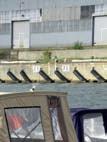

recirculation systems increased by a factor of 3 to 79 in 2023 with the volume of water going up 5 times, suggesting an increase not only in the number but also the size of these systems. Since 2012 the number of economically active companies has varied from 66 to 88. While total production has fluctuated it has shown a slightly increasing trend since 2012 reaching 784 tonnes in 2023. The volume of fish and crustaceans
grown in recirculation has increased spectacularly since 2019 but from a very low base. In 2023 this volume reached 125 tonnes up from 10 tonnes in 2019. Common carp dominates aquaculture production accounting for around 70 of the total in the five years to 2023, while catfish, sturgeon, and trout are the next most produced species with a combined production of around 100 tonnes. Pond farms apart from the fish they
produce are sources of ecosystem services as birds and animals are attracted to the ponds and the surrounding vegetation. Farmers get some compensation for providing these services, says Mr Riekstins, but the amounts are modest and relate to some 30 companies covering 3,500 ha. The idea is to encourage farmers to produce extensively as this is more sustainable. Farmers must also contend with losses from predation by cormorants and other fish-eating birds and animals—otters are a major threat. These direct losses from predators are to some extent compensated. Pond aquaculture is unlikely to expand meaningfully in Latvia—any possible growth in the sector is likely to come from recirculation systems if the economics are favourable. However, much depends on the market possibilities as the domestic market is small and producers must compete with imported fish products.
At the same time exporting is not easy, especially when the volumes offered are small and the production costs are quite high.
Some fish farmers produce large fish for angling either selling them to companies offering angling facilities or creating angling ponds themselves and stocking them. This income diversification could potentially also include birdwatching tours and hospitality services for tourists. But angling has shown the most promise so far with recreational fishers coming to fish and then using infrastructure created by the farmer to cook the catch and perhaps also spend the night. Angling is popular in Latvia where there are an estimated 100,000 anglers (over 5 of the population). Sustainable angling is promoted by the agency responsible for distributing angling cards which also organises familyfriendly events to encourage both adults and children to take up the discipline. The angling fraternity is divided into different groups, for example, those that target predatory species, and the government supports this interest by providing financial support from the national fish fund for stocking public water bodies with juveniles of these fish species. Sport fishing enthusiasts also receive support from the fund when they participate in international fishing competitions (world championships), and societies or associations are also eligible if they organise schools or training courses for young anglers and invite lecturers or scientists to instruct the pupils. Creating a new generation of people interested in fish, fishing, and fish farming will not only benefit the sector but also society more widely and is a worthwhile investment by any measure.
The Latvian University of Life Sciences and Technologies (LBTU) comprises five faculties of which one is the Faculty of Agriculture and Food Technology. The university offers undergraduate, postgraduate, and doctoral degrees in several fields (forestry, veterinary science, food, agriculture, environment and water management, IT, and economics) and, like institutions of higher learning across Europe, also offers programmes for international students.
Since 2016 when the first international student joined the number has increased to about 250 today thanks in part to the relatively low fees. Courses for international students are conducted in English, but the university’s scientific accreditation—only four universities in Latvia have earned this—may also attract foreign students.
International students at the university can take a bachelor’s degree in engineering in food and beverage technology, which is one of the eight study programmes offered in English. The degree introduces students to food technologies, food quality, and product development from the initial idea to the creation and marketing of a product. Students do not specialise in their initial years, instead they study a wide range of subjects including fruit and vegetable, meat, fish, cereal, and milk processing technologies, which allows them to work in any of those fields. Later in the programme they are expected to specialise. Students who wish to study further can take a master’s degree in engineering in food science, where they will focus on food chemistry, product development,
and food quality and safety. The more ambitious, on concluding their master’s, can continue with a Ph.D. in food science.
The discipline food technology has a 76-year history in Latvian higher education and the Faculty of Agriculture and Food Technology (FAFT) offers both academic and professional degrees, the latter intended for those who want to work in industry. However, as Liene Ozola, the vice dean points out, even those who graduate with an academic degree usually spend some time working, for example, in production, or a laboratory, or doing quality assessments. Some may also end up working for a government ministry. The faculty has eight units including the Fish Processing Biotechnology Studies and Research Centre. Other units include five institutes (animal sciences, soil and plant sciences, food, plant protection, and agriculture), a training and research farm, and the evaluation centre for economic traits of plants. The faculty does not however have a unit dedicated to aquaculture.
Sanita Sazonova, the head of the Fish Processing Biotechnology Study and Research Centre, suspects it may be because the aquaculture industry is relatively new and consequently not very large. It has also mainly focused
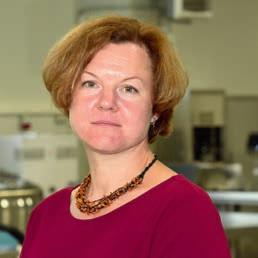
Sazonova, head of the Fish Processing Biotechnology Studies and Research Centre which has a newly renovated building that houses well-equipped laboratories.
on growing fish, says Ms Ozola, so there has been little local demand for higher education or research in the field. Related fields such as processing, food safety, or the veterinary aspects of fish production are more popular. It is difficult, says Martins Sabovics, the head of the International Cooperation Centre and a former dean of the faculty, and the programme will not be cost-effective if only a few students are enrolled.
Aquaculture does not merit its own programme—yet
Some aquaculture companies may send an employee to study additionally at a university that offers the specialisation needed. Offering a program exclusively in aquaculture might create challenges for students in finding employment in this field. It would be practical to assess the
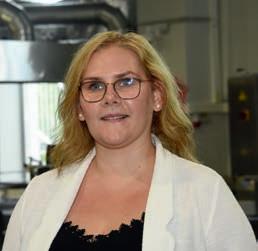
demand for specialists in this area and, based on that, determine the feasibility of implementing such a programme. The university, together with the faculty and the Life-long Learning Centre, offers short courses on specialised subjects which is another way of obtaining additional qualifications. These earn the attendee a certificate, but designing and implementing a three- or four-year bachelor programme is a different ball game altogether and represents a risk the faculty is unwilling to run. There is a close collaboration between the university and industry for the benefit of both parties. This includes a system of internships where students work at companies, creating links between the university and industry. Many company owners and senior staff are themselves graduates from the faculty. So, if there is a technical issue that calls for external expertise, they can always pick up the phone and speak with someone at the faculty.
Companies can also receive support from the government to develop new products. This enables them to approach the faculty with a project for which they can pay the costs thanks to the money received from the government. If the trial results in a product that is manufactured commercially, then the company is not obliged to return the money to the state. Last year the faculty had close to 50 projects of this nature, says Mr Sabovics, of which two were related to fish. One of these sought to make a product from smoked catfish. Faculty staff, in collaboration with companies or associations, can submit project applications to the Rural Support Service, which can offer up to EUR 400,000 if the evaluator feels the project has merit. If there is some form of innovation in the project, then it stands a better chance of being funded, says Mr Sabovics. Another consideration for the service when evaluating applications is the presence of partners from industry in the project consortium, as the results of the project
should benefit the industry. Four fish-related projects received this support including one that sought to develop a range of products from sprats (Production of structured fish mass (minced fish) from Baltic Sea fish and its use in fish products). Another proposal looked at developing ready meals combining fish with vegetables which could then be served at kindergartens, schools, and hospitals, while the third worked out the nutritional requirements for these three categories of users to adjust the products accordingly (Development of recipes and manufacturing technologies for fish dishes intended for preschools and schools, using fish available in the Republic of Latvia). The projects were financed by the European Maritime and Fisheries Fund. More generally, the faculty is also interested in reducing waste from the fish processing industry by developing value-added products based, for example, on fish heads
or bones. Ms Ozola mentions one of the students who has extracted collagen from fish skin which could potentially be interesting for industry.
Close collaboration with industry ensures new centre’s relevance
The building housing the Fish Processing Biotechnology Studies and Research Centre has been recently renovated, the work started in April 2021 and concluded in December 2023 and the centre opened in May 2024. It now houses well-equipped laboratories where samples can be prepared and analysed for teaching or research purposes. The centre also features a seminar and tasting room where the sensory properties of newly developed fish products can be sampled and evaluated. Staff and students at the centre also have access to equipment that is used in other laboratories belonging to the university.
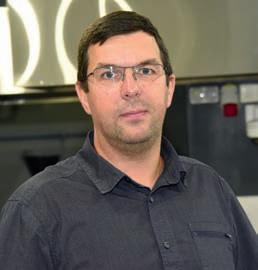
More sophisticated equipment that is available at other sites has therefore not been purchased by the centre to avoid duplication of resources and to use the funds saved elsewhere. The laboratories are used only for fish and seafood. The Food Institute, which is a division of the faculty, also has separate pilot laboratories for vegetables and fruits, dairy products, cereals, beverages, and meat, where research on fish was also conducted. However, after working with fish, it was necessary to disinfect the equipment to remove the distinct fish odour before it could be used again for meat research, recalls Mr. Sabovics. Together with the previous rector Irina Pilvere, he decided to make the centre exclusively for experiments with fish. The centre was equipped in collaboration with the Latvian Fish Processors’ Association, which ensured that the equipment purchased would be useful to the industry. The association did not contribute financially—the funding (approximately EUR3m in total including EUR1m that was added later to compensate for inflation) was provided by the Ministry of Agriculture’s Rural Support Service
through the European Maritime and Fisheries Fund.
In addition to machines, the centre is equipped with cameras which enable staff to supervise the students remotely as well as to conduct courses online. The work carried out at the centre includes research into ways of increasing a product’s shelf life, reducing the cost of production, into packaging, the use of by-products, improving fish processing techniques, and studying consumer attitudes, among other areas.
The centre emulates a processing plant with scaled down versions of many of the same facilities, machines, and tools that a worker in a processing factory would encounter. Processes such as changing into work clothes and disinfecting hands and shoes exactly like in a commercial processing plant are mandatory for the students. The idea, says Ms Sazonova, is to acquaint students with the processes, machines, and techniques found in a typical processing plant so that they face fewer surprises when they start working.
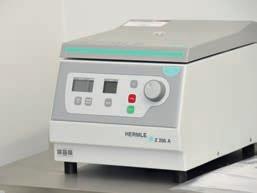

equipped to emulate a processing facility, but at a smaller scale.
Another use for the equipment that is being considered by the centre is to let smaller companies rent it if they want to do some product testing or development. Small companies are unlikely to have all the equipment available at the centre as their research and development operations are likely to be modest, unlike the big companies who have the resources to invest in laboratories and equipment. A challenge facing the faculty is that fish processing does not attract many students. Part of the issue may be a general shortage of students, while another
could be that young people are increasingly drawn to fields dealing with plant-based or other products. Currently, the faculty does not offer a programme specifically related to plant-based product development, though Mr Sabovics says that additional lectures are offered about alternative products and their production. But if demand increases the faculty could develop a programme, he adds. Responding to student interests, creating attractive facilities, and offering accredited programmes in English are among the ways a faculty or university can thrive at a time of increased international competition for scholars—a lesson LBTU has clearly learned.
Paula Lejina street 2 LV-3004 Jelgava Latvia
Head of centre: Sanita Sazonova sanita.sazonova@llu.lv
Area: 1,810 sq. m on two floors
Project cost: €2,876,315.46 (European Maritime and Fisheries Fund).
Duration: Three years (1 April 2021 to 31 December 2023)
Facilities: Online teaching facilities, laboratories, and equipment for study and research within food science
Latvian coastal fishery
Situated along the eastern shore of the Baltic Sea, Latvia has a coastline stretching approximately 500 kilometres. The coastal fishery in Latvia is characterized by small-scale, artisanal fishing activities. This sector is distinct from the larger, more industrialised that targets species in offshore waters in the Gulf of Riga and in the Baltic Sea. The coastal fishery typically involves small boats operating close to shore, often using traditional fishing methods such as gillnets, trapnets, and lines. The main species targeted by coastal fishermen include herring, flounder, plaice, seatrout, and round goby.
The coastal fishery sector employs a significant number of people, particularly in rural and coastal areas where alternative employment opportunities may be limited. For many coastal communities, fishing is not just an economic activity but also a way of life, deeply embedded in local culture and traditions. The coastal fishery in Latvia, though relatively small in terms of overall economic contribution compared to other sectors, helps to sustain populations in areas that might otherwise suffer from depopulation and economic decline. Moreover, the industry supports related sectors, such as boat building, net making, fish processing, and coastal tourism thereby contributing to the broader local economy.
The coastal fishery in Latvia faces several challenges, many of which are environmental in nature. Overfishing, pollution, and climate change impacts such as warming water and invasive species are significant threats to fish stocks. The Baltic Sea is particularly vulnerable to eutrophication, a process where excess nutrients (mainly from agriculture and wastewater) lead
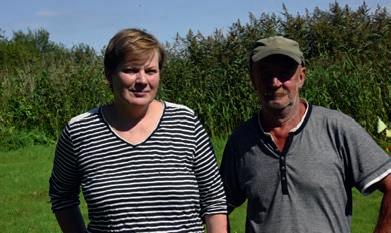
to algal blooms that deplete oxygen in the water, creating dead zones where few marine organisms can survive. This poses a direct threat to marine life. As a semi-enclosed body of water, the Baltic Sea depends on periodic inflows from the North Sea for oxygen-rich water that oxygenates the depths of the central Baltic. Strong inflows have been infrequent over the last few decades which has contributed to the poor environmental status of the Baltic Sea. These developments have an impact on the offshore fisheries but the coastal fishers with their smaller quotas, use of passive gears,
and vulnerability to seals are disproportionately affected.
Mazjuras Zvejnieki is an association of coastal fishers founded by Andris Cirulis, a veteran of the industry and one whose family has been fishing for generations. His wife, Iveta Tomsone runs the association office. Mr Cirulis felt the need to create the association as the coastal fishery was shrinking with fewer fishers and smaller catches and the existing federation was not very active. The new association started with 12 members but today, five years later, has 75 from all along the Latvian coast. Altogether there
are 130-150 coastal fishers in the country. The rapid expansion in membership was probably because for the fishers it was important to know that the new association was formed by one of them, someone they felt they could trust, says Mr Cirulis. The association promotes the coastal fishery to create awareness about the activity, tries to attract young people to the industry, and finds ways of diversifying income streams. It also submits applications for project funding to carry out these promotion and dissemination activities. But the original idea of the association, Mr Cirulis says, was to act as an
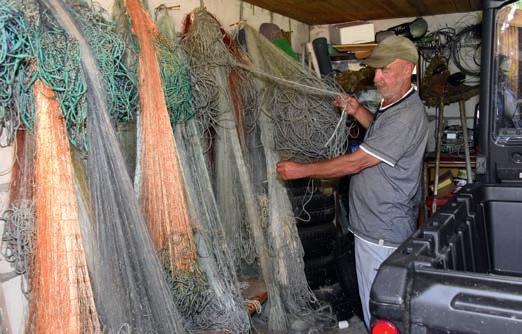
Apart from his role as chairman of the
intermediary between the sector and the administration—giving official information from the ministry to the fishers and funnelling the industry’s concerns the other way.
Producer organisation offers benefits to members and non-members alike
The coastal fishery is regulated by quotas as well as spatial, temporal, and technical restrictions. These depend among other factors on fish and bird breeding seasons. Quotas are set at 4 of the national quota and as the national quota has decreased so has the absolute value of the coastal fishery quota. However, Mr Cirulis adds, the decline in the volume affects mainly the offshore fleet—the volumes
caught by the coastal fishery are so small that when the national quota changes we barely register it. Nineteen members of the association, all from the same region, including Mr Cirulis, have formed a producer organisation (PO), which gained official recognition at the end of 2023. This is the only PO for coastal fishermen in Latvia. Although the other members of the association do not belong to the PO, they can still benefit, says Santa Jansone who heads the Fisheries Strategy Division in the Department of Fisheries. For example, if the PO organises a training programme on how to gut, clean, and prepare the fish when it comes out of the sea, it can also be attended by fishers who are not members of the PO.
In addition to its other benefits, this kind of programme facilitates direct sales by the fishers
to consumers, says Mr Cirulis. In terms of the bigger picture, the entire coastal fishery sector being so small benefits from cooperation between the fishers, whether they are members of the PO or not. As a PO it is easier to apply to EU or national funds
to support this kind of activity than it is for an individual fisher, and approval is also easier if the authorities can see that a large group of fishers stands to benefit. In theory, the other fishers could form their own PO if they belonged to the same region, but

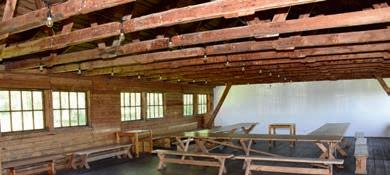
in practice it calls for a dynamic and bureaucracy-savvy person who can drive things forward and not all fishers are suited to this role. There are also certain formal requirements to establishing a PO, says Ms Jansone, for example the members must all belong to the same region, and they should catch a minimum of 25 of the total regional catch.
Baltic herring forms the bulk of the catch in the PO
Coastal fishers catch several species some managed by quotas and others not. These include Baltic herring, whitefish, round goby, plaice, sea trout, garfish, and flounder. Baltic herring, a quota species, forms the bulk of the catch. In Mr Cirulis’ PO it amounts to about 80 of the PO’s total catch of about 350 tonnes per year. The entire volume of Baltic herring caught by the PO, some 280 tonnes, is caught by four fishers using pound nets. Among the benefits of a PO is the support available for common facilities such as processing or storage. Currently many of the members have their own small processing plants but Mr Cirulis hopes that the PO will have its
own facility soon. But before that he is interested in improving logistics—organising a vehicle so that the PO can collect the catch from the fishers and creating a cold store to store the collected fish. Coastal fishers cannot live from fishing alone, they need additional sources of income such as from a small processing facility, or from tourist activities like having a guest house, or providing meals. This is the only way to be financially viable, says Mr Cirulis, and it is only if we are financially viable that we can convince young people to join the profession. We can show them that they will not just be hauling fish out of the water, but that there are different aspects to the job. Interacting with tourists, organising fishing trips, or having homestays, for example, show the diversity of the work of a coastal fisher.
However, for all the interest in getting a new generation of fishers to join the profession, they potentially face an issue. New fishers may not be able to fish with nets as the number of nets is limited by the authorities. Existing nets can pass from one generation to the next, but that does not help someone who does not have a
complaints 15 fishers will now be permitted to cull up to 60 seals, if the animals are close to and a threat to their nets and catch. The permits will be mainly given to gillnet fishers. Regarding cormorants, however, discussions are ongoing with the authorities but there are no recommendations yet on how to solve the problem.
opportunities when they present themselves
fisher parent. Mr Cirulis acknowledges the problem and will discuss it with representatives from the ministry and from BIOR, the national Institute for Food Safety, Animal Health, and Environment to try and review the limits on the number of nets. A fraction of the nets is used by subsistence fishers and when they stop fishing their net limits are made available to the public, including to new young fishers. Another possibility is to divide the nets, so that if a fisher who owns 200 m of net pulls out, he could be replaced by two fishers who each get 100 m. The coastal fishery also faces a threat from seals and cormorants. These do a lot of damage to the catch killing, injuring, and stressing the fish in static gears. After years of
Climate change affects also the coastal sector, an impact exacerbated by the relatively shallow water in which these fishers operate. Mr Cirulis has noted more algae in the water and more unstable weather with frequent storms. Invasive species such as round goby are becoming more common. But, he adds, this species can be exported to Ukraine and Bulgaria in response to demand from there. In addition, a domestic market is developing for this fish, and one product in particular is proving popular— smoked goby. The coastal fishery in Latvia must contend with several structural issues including smaller catches and fewer people entering the fishery, but coastal fishers have shown resilience and the capacity to take initiatives that bode well for the future of the sector.
Number of members in association: 75
Of which number of members in PO: 19
Catch (in PO): 350 tonnes (2023)
Main species: Baltic herring (80%)
Other species: Round goby, plaice, sea trout, garfish, whitefish, and flounder
Inland waters in Latvia are restocked with native fish to maintain biodiversity in the natural environment. The institution behind the restocking programmes is the Institute of Food Safety, Animal Health and Environment (BIOR) under the Ministry of Agriculture. The institute’s fish farm Tome, together with a network of subordinated fish fry and smolt production sites in other parts of the country, is responsible for breeding millions of juvenile fish of different species.
The institute with its network of hatcheries is critical to Latvia’s efforts to sustain fish populations in its rivers and lakes, particularly species threatened by overfishing, habitat degradation, and environmental changes. Aquaculture is an important part of the modern food system where various components are the focus of research at the institute, including fish and environmental health, and sustainable use of resources. Tome and the other hatcheries (Dole, Pelči, Kārli, Brasla) in the network focus on breeding freshwater fish species that are native to Latvia. Among the species bred and studied here are salmon (Salmo salar), sea trout (Salmo trutta), vimba (Vimba vimba), pike-perch (Sander lucioperca) and sturgeon (Acipenseridae). Salmon and sea trout, in particular, are of high priority, given their economic and ecological importance, as well as their dwindling populations in natural habitats due to pollution, hydroelectric dams, and unsustainable fishing practices.
Breeding migratory fish is among the activities undertaken at Tome
This covers not only salmon and seatrout but also Atlantic sturgeon (Acipenser oxyrinchus),
which is a native of the Daugava river. Breeding and releasing this fish has taken on an international dimension, says Mr Ivars Putvikis, the head of Tome, as the fish is bred at Tome but also in Estonia, Lithuania, Poland and Germany. The idea is for each country to increase its breeding stock with the aim that in time they will interbreed creating a more genetically robust stock. Breeding and releasing fish improves the environment more generally by securing biodiversity. Among the fish species that are bred and released in large numbers from Latvian hatcheries is the river lamprey. In 2023 over 13 million fry were released in the Daugava and Gauja rivers. Lamprey is an iconic fish, so BIOR fisheries experts also assist the lamprey to migrate upstream on the Venta river. The Venta has a major natural barrier in the form of a waterfall that the lamprey cannot traverse, so the BIOR experts organise for it to be caught downstream of the waterfall and then transported upstream.
At Tome, one-summer-old salmon fry are released into the Daugava. These fish are raised in flow-through systems that use water pumped from the Daugava so that they can find their way back to the river when they

grow and return from the sea to spawn. Other fish are bred in recirculation systems as they allow for closer control of different parameters including water temperature which is important both for spawning and for feeding. Pike perch, for instance, spawn at 14 degrees, so if the temperature fluctuates or if it rises it will have an impact on the spawning. There is a period in the spring when the water temperature is favourable for pike perch to spawn. But with climate change this time slot is contracting as the temperature rises to unfavourable levels earlier in the
year, notes Mr Putvikis. Feeding faces similar constraints as fish feed best at a certain temperature range. In a recirculation system this temperature range can be maintained so the fish feed optimally and grow correspondingly. An advantage of using recirculation systems is that the broodstock can be smaller as the spawn results are better thanks to the greater control over the whole process. Currently, catfish and pike perch are grown in recirculation, while sturgeon will be moved to this system, says Mr Putvikis. Salmonids are grown in flow-through systems,
but here too experiments are being conducted to breed these species in recirculation.
Research centre and innovation infrastructure complements hatchery activities
An essential, continuously developing function of the institute and its structures is to provide consultations and science-based advice to the government and the aquaculture sector as well as to promote innovation and knowledge transfer in aquaculture. In 2016 with a support of European Fisheries Fund (EFF), the institute has opened the Aquaculture Research and Education Centre in Tome where personnel research topics of relevance to the aquaculture industry, such as fish breeding lines, fish diseases, genetic diversity, environmental impacts on fish populations etc. Among other areas the researchers look at ways to improve the quality of fish fry and to refine breeding and cultivation techniques to enhance the efficiency and success rates of breeding using new innovative

Automated feeders are programmed to deliver a fixed dosage of feed at a certain interval to the tank.
technologies. The centre is also involved in research concerning environmental conditions related to water, habitat, and invasive species. Some research projects are also focused on developing

continuous, real-time water monitoring systems gathering, analysing large data sets to support quality management at aquaculture farms.
BIOR also offers training courses—both theoretical and practical—for people working in the aquaculture industry and other related fields. For example, institute experts provide training for veterinary inspectors to strengthen their skills in specific areas of aquaculture. Other areas of activity include consultancy services for fish breeding and fish diseases, and disseminating the results of the research conducted to the aquaculture industry and wider public by organising seminars and conferences, releasing publications, and uploading summaries of the research to the BIOR website.
A lot of efforts go into cooperation with relevant universities
and institutions from Latvia and abroad. These outreach efforts also extend to schools, local communities, and the fishing industry and help promote the preservation of aquatic ecosystems and Latvia’s biodiversity to coming generations.
New education centre to develop innovative ideas for use by the sector
Completed in April 2024, a new recirculation facility supplements the Tome Aquaculture Research and Education Centre which is an innovative establishment to support aquaculture through experimental work and pilot trials. The project was funded by the European Maritime and Fisheries Fund (EMFF). These studies will be used to develop and implement innovations, improve and streamline fish farming processes, increase production

Pike perch that are being grown to be used eventually as broodstock.
efficiency, and diversify product offerings for Latvian aquaculture based on innovative technologies. The initial research framework is already clear. For example, new infrastructure will be used to house fish that have just been captured from the wild to introduce them to the new environmental and controlled conditions. Some of the new equipment will also be used as cold systems where the temperature is maintained to emulate winter, so that researchers can study the
effect on fish breeding patterns.
Researchers are using selective breeding methods to improve the quality of the stock; they focus on characteristics, like size, robustness, speed of growth, and resistance to disease to breed stronger and healthier fish. The research also seeks ways of improving the fish’s capacity to thrive in water that is warmer than that it is genetically programmed to live in. This is necessary if fish must live and breed in temperatures in the wild that are higher than they
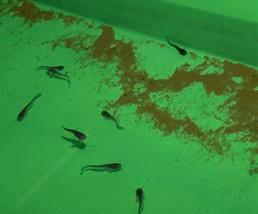
were a few years ago and which are likely to get higher still. Other studies deal with nutrition to ensure that the different recirculation systems are supplied with feeds appropriate to the stage of maturity and to the species of the fish they contain.
The new-generation recirculation system will generate and transfer knowledge to the sector in such areas as energy-saving and labour-saving features, digitalised and automated processes for feeding and climate control, water heating with heat pumps, and using solar energy to reduce
Keguma District LV-5020, Latvia
Director: Mr Ivars Putvikis
Activities: Breeding of fish to restock Latvian water bodies; to supply fish farms with juvenile fish; selective breeding for desirable attributes; conducted improvement research on pikeperch, burbot farming protocols, experiments determining the effect of fish feed additives on the growth and health (immunity) of fish fry, evaluation of the effectiveness of the use of preventive methods and disinfectants on fish health, comparative studies of the effectiveness of fish feed, carp breeding studies/demonstrations, research on anti-parasitic agents, initiated European catfish breeding studies, etc.); providing knowledge exchange in the field of aquaculture within EMFAF-financed projects by conducting individual consultations, seminars, workshops, practical trainings and experience exchange trips in cooperation with foreign experts.
electricity consumption. These facilities mean that the whole operation can be run with reduced number of employees, but they must be technically qualified as the management of such a system is complex. Over the last several years BIOR with the Tome facility and all research and experimental facilities have been modernised and expanded on a regular basis, a development that is ongoing. This and other improvements will cement the role of the institute and particularly the Tome centre in the inland fishery and aquaculture industry in Latvia and abroad well into the future.
The newly created infrastructure will provide even more opportunities for the improvement of reproduction and farming technologies: off-season spawning, artificial broodstock with high quality genetic material, farming studies and demonstrations with focus on the process economics, expansion of the range of farmed and studied fish species; inclusion of saltwater fish farming.
Species: Baltic salmon (Salmo salar) and sea trout (Salmo trutta); pike-perch (Sander lucioperca), European whitefish (Coregonus lavaretus); European catfish (Silurus glanis), Atlantic sturgeon (Acipenser oxyrinchus), sterlet (Acipenser ruthenus), Siberian sturgeon (Acipenser baerii), carp (Cyprinus carpio), pike (Esox Lucius).
Facilities: Eight new (2024) recirculation aquaculture systems and live food cultivation system; flow through systems
The fish processing industry has undergone significant transformation in recent decades, driven by the need to enhance efficiency, improve product quality, and maintain competitiveness in a global market. Automation has played a pivotal role in this transformation, offering solutions to labour shortages, rising production costs, and stringent quality standards.
Fish processing involves a range of activities, including sorting, heading, gutting, filleting, freezing, smoking, marinating, salting, packaging, and quality control. Traditionally, these tasks were labour-intensive, requiring skilled workers to handle delicate processes such as filleting and deboning. However, the increasing demand for seafood products and the need for consistent quality have necessitated the adoption of automation technologies. The growth in the aquaculture industry where large volumes of fish of the same size are produced has also facilitated automation in the processing sector.
Automation is driven by technological developments
Automation in fish processing has been primarily focused on mechanising repetitive and physically demanding tasks. For instance, automated filleting machines are now widely used to process large volumes of fish with precision, reducing waste and improving yield. These machines are equipped with sensors and imaging technologies that allow for precise cuts, ensuring maximum utilisation of the fish. Automated sorting systems use advanced sensors to categorise fish based on size, weight, and quality, streamlining
the process and reducing the need for manual inspection.
Several technological advancements have driven the adoption of automation in the fish processing industry. Robotics, artificial intelligence (AI), and machine learning are increasingly being integrated into processing lines to enhance efficiency and accuracy.
The use of robotic systems in fish processing has been a gamechanger, particularly in handling delicate tasks such as filleting and packaging. Robotic arms equipped with specialised grippers can handle fish with care, reducing damage and ensuring high-quality output. These systems can operate continuously, improving throughput and reducing the dependency on human labour. AI and machine learning algorithms are being used to optimise processing operations. For example, AI-driven vision systems can analyse fish in real-time, detecting defects, and ensuring that only the best products are packaged. Machine learning models can also predict maintenance needs for equipment, reducing downtime and improving overall efficiency. The Internet of Things (IoT) and data analytics have also found applications in fish processing. IoT-enabled sensors can monitor various

Ugis Skuja, member of the board of Riga Gold Robots, a company specialised in metal working, engineering, and robotics.
parameters such as temperature, humidity, and equipment performance in real time, ensuring optimal processing conditions. Data analytics tools can process this information to provide insights into production efficiency, allowing for continuous improvement and better decision-making.
The fish processing industry in Eastern Europe took off in the early 2000s as countries joined
the EU and the cheaper labour there attracted much of the processing work from the west. However, over the years it has become more difficult to find people to work in this business, and processors there too are automating their operations. Latvia is known for its canned smoked sprats in oil, a century-old product that is today widely exported. Sprats, pelagic fish found in the Baltic Sea, are usually processed by hand due to their small size. To smoke the sprats, the fish are manually threaded on to a spoke. The spokes are loaded on

to a frame which is introduced into the smoking chamber. Once the fish are smoked, they are removed from the spokes and placed, again by hand, aesthetically in cans. The extent of the manual work in the production of this iconic product will pose a threat to its future, feels Karlis Gebauers, the head of the Latvian Fish Processors’ Association. The association has therefore commissioned trials to study the feasibility of automating at least part of the process. We need to secure the future of this product that is so closely associated with Latvia, he says.
One of the companies conducting the trials is Riga Gold Robots, a firm that specialises in automating manufacturing processes. These could be in the food industry or in other sectors involving fabrication such as steel or metal working. Ugis Skuja, a member of the board, explains that the machine they have built is a prototype that still needs to be fine-tuned before
when the conveyor movement was interrupted, the fish taken, and the conveyor started again.
Twin units in a single frame confirm engineering principles are sound
unit and six when both units are in use. But speed is perhaps not critical, Mr Skuja thinks, as unlike humans the machine can work a 24-hour shift.
it can be considered a commercial product. The machine automates the process of threading the fish on the metal spoke. While this is a simple operation for a human, it is more complex for a robot as the fish must be threaded evenly and must be suspended freely from the spoke not touching neighbouring fish, nor parts of the frame on to which the spokes are loaded, nor the walls of the smoking chamber. The heart of the machine is a camera that photographs the fish and a robot that steers a grabbing device. The camera identifies the eye—for it is through the eye that the fish are threaded on the spoke—and sends the coordinates of the eye to the robot. Then the grabbing device seizes each fish by the eye and feeds it to a chain that threads it on to the spoke. The grabbing device is powered by three motors which enable it to be moved as necessary into the correct position to seize the fish. Several wrinkles were ironed out in the development process. For example, the team first tried to get the grabbing device to take the fish from a moving conveyor, but discovered it was more accurate
The machine comprises twin systems each comprising a camera, robot, grabbing device, and conveyor belt supplying the raw material, etc. that operate in parallel, doubling the speed at which the fish can be threaded on to the spokes, each of which is loaded with twenty fish. Once the spoke is fully loaded with fish it is automatically removed while the next spoke enters the machine. Having parallel systems in a single machine is intended to prove a principle, says Mr Skuja, as a production facility would require eight or even sixteen devices working simultaneously. The machine is programmed to take a second to load one fish on to a spoke giving an output of three spokes a minute for one
All the physical machinery represents only a fraction of the development work for the machine, the bulk of the work is invisible because it involved teaching the camera to find the eye. RGR tested several cameras before it found one that could find the eye without being distracted by other shiny surfaces or reflections on or around the fish. The company contacted Riga Technical University who advised the use of neural networks rather than another system that the company had been using. The use of neural networks required the camera to be taught what it was supposed to look for. This involved taking hundreds of images and manually showing the camera which was the eye so that it learned to recognise it. The programmers also discovered that the pictures used to train the camera had to

be taken of fish caught at different times of the year. Apparently, the fish differ from season to season enough to confuse the camera. So far the camera has only been programmed with images of fresh fish, if frozen fish are used it would have to be trained with images of them as well.
While critical components such as the camera and the robot were outsourced the engineering and metal work was all done at the RGR factory which is equipped with laser cutting machines for steel, sanding machines, and other steel working tools. Mr Skuja himself did all the 3D modelling for the project, while other employees were involved with the programming and electrical work. The machine was tested at the factory of a company that produces smoked sprats as this provided the most realistic conditions under which the machine would have to operate. Moreover, the raw material for the testing was available and the machine could
be professionally cleaned at the end of each day. The company where the trials were carried out is also a member of the Latvian Fish Processors Association, says Mr Gebauers, but if the project is successful and results in a commercially viable machine, the entire industry will benefit. The project is funded by the EU and has been split into two phases. In the first phase, the machine only had a single threading unit and the camera used another system to recognise the fish eye. In the second phase, a second unit was added and the developers switched to a neural network for the camera. But further changes will be necessary before the prototype evolves into a finished machine. Many of the parts were fabricated on a small 3D printer and they would need to be made in a way that is food-grade approved. Food safety features such as hygienic design would also need to be implemented.
Innovation stems from talent, funding, and the cultural importance of sprats
At the factory which trialled the machine many of the workers
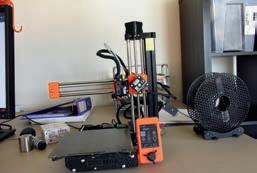

who currently thread the fish on to spokes are elderly and will retire in the not-too-distant future. Finding others to take their places is not easy which means that the production may stop altogether jeopardising the other jobs that are related to this product. If the machine fulfils its promise to automate the threading, the production will continue, and the other jobs will be saved. Instead of taking jobs, this is a case of automation saving jobs for workers, Mr Kuja points out. Now that the concept has been proved in the project’s first two phases, a potential third phase would be used to create the final product. RGR is in discussion with the National Fisheries Producers’ Organisation, the body responsible for drafting the proposal and
applying for the funding, about a third phase. The producers’ organisation has not worked with RGR alone on this project, but also approached another Latvian engineering company to develop a similar robot. They have used a different approach from RGR, says Mr Gebauers, but ultimately it will be the processing companies that decide the solution they want to implement. If a third phase were to become a reality, Mr Kuja would consider pooling resources with the other company to build a commercial version of the robot. European funding, concern for an iconic Latvian product, and local engineering talent would thus combine to create an innovative solution for a popular product that may otherwise have faced extinction.
Globalisation and liberalisation of international trade in fish and seafood products open up economic opportunities, but at the same time greater hurdles loom over any notions of uninterrupted access to markets. The requirements for traded foodstuffs are very high, as numerous safety and quality standards have to be met.
Red shrimp from Argentina, sardines from Morocco, pangasius from Vietnam, salmon from Norway or Chile –the counters and shelves of sh trade in wealthier countries o er a wide selection and variety of seafood delicacies. Fish and seafood are the most traded food group in the world. Nearly 38 of the global production of 184.5 million tonnes in 2022 (FAO SOFIA 2024) was traded on the world market. Per capita consumption of seafood has more than doubled over the past six decades, from 9.0 kg (live weight equivalent) in 1961 to 20.7 kg in 2022. However, it is also true that, in terms of value, more than half of the international seafood business originates in developing countries. It is precisely there that sh and seafood products, both for export and for domestic consumption, play an important role in ensuring the livelihoods of millions of people. Fishing and aquaculture production, processing and trade, as well as other related activities, are an important source of income, foreign exchange, consumption, and growth.
This development has been given a major boost due to globalisation and liberalisation of markets in many countries. Moreover, the World Trade Organization (WTO) classifies fish as an industrial product, for which, unlike many agricultural products, relatively low
import duties apply. The opening of markets to products from other regions of the world, which often produce food under completely different traditions, regulations and standards, offers not only opportunities but also poses a particular challenge. This is because there is a real risk that products from the producing countries may collide with regulations and requirements in recipient countries and therefore be rejected.
The range of requirements and possible safety and quality concerns that can prevent unhindered market access is wide. It is no longer just about protecting the safety and health of consumers, but also protecting and preserving the environment in the producing countries, ensuring decent working conditions, and using aquatic resources sustainably.
The issue of fish safety and quality goes beyond microbial spoilage and the use of chemicals or veterinary medicines. This increases the pressure on stakeholders in the producing countries, who often have no means to meet complex requirements, which in turn affects the livelihoods of many local people. The situation is complex and tricky. On the one

In industrialised countries, fish processing is often highly mechanised. Manual labour is largely avoided, which ensures high sanitary and hygiene standards.
hand, the global demand for fish and seafood is rising. Market liberalisation and the associated international political environment create tempting opportunities for parties in the fishing sector. On the other hand, there are growing concerns that the traded products could potentially jeopardise consumers, the environment, or resources, and therefore should not be imported. Unfortunately, safety and quality concerns are sometimes used as a “protectionist weapon” in international trade to shield domestic fishing industries and local markets from often cheaper imports. The decision on whether the rejection of a delivery is indeed justified or rather constitutes an artificially erected trade barrier is sometimes not easy. In order to avoid unfair trading practices and disguised technical trade
barriers, it is essential that judgements are based on sound scientific evidence.
However, data in this field is highly inadequate and there are considerable gaps in the statistics on fishborne diseases and quality defects
The available data mostly comes from industrialised countries and shows that seafood, mainly shellfish, are involved in up to a quarter of reported disease outbreaks. Due to their filter-feeding nature, there is a risk that they accumulate pathogenic viruses and bacteria in their organisms. In contrast, most outbreaks of foodborne diseases in fish can be attributed to biotoxins (particularly ciguatera) and histamine. The main reason for import rejections in the United States is microbial spoilage, followed by the detections of Salmonella, which
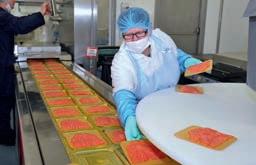

account for about a quarter of all rejected cases. However, Salmonella do not necessarily indicate hygiene deficiencies in processing, as they are widespread in many tropical ponds. In the EU, the European Commission operates the Rapid Alert System for Food and Feed (RASFF), which informs all member states about food that does not meet safety and quality requirements. The main causes of alerts were residues of chemicals and medicines (approximately 45), followed by microbial contamination (approximately 40), while histamine and parasites caused the lowest alert rates, namely 1.3 and 4, respectively.
The assessment of potential risks and real dangers in the seafood sector shows, on the one hand, that marine biotoxins are responsible for many transmitted diseases. These include both ichthyotoxins (fish toxins), especially paralytic, diarrhoeic, or neurotoxic shellfish toxins. Bacteria or viruses can often be killed by thorough heating. The risks are particularly high with shellfish, which are often consumed raw (e.g., oysters). On the other hand, hazards can also arise from harmful chemicals such
as mercury, PCBs, or DDT, which accumulate in the fish body and thereby increase the risk of health problems (bioaccumulation).
To counteract such risks, binding international standards are needed for the harmonisation of safety and quality standards in the global trade in fish and seafood. This harmonisation must encompass all areas of the food trade, from sourcing raw materials to processing and packaging, to export to other countries, as far as it pertains to food safety. Particularly important is the traceability of all products and their ingredients to the place of origin, as laws and regulations regarding food safety often differ from country to country and supply chains are becoming increasingly complex. Ensuring the safety and quality of fish products requires enhanced international cooperation and the development of science-based standards. These must align with the latest findings in the field and effectively distribute the responsibility for safety across the entire food chain.
Trade barriers complicate global business
The currently recognized international regulatory framework for
fish safety and quality has been mainly developed by the Codex Alimentarius committees. This Codex is a collection of international norms, standards, guidelines, and codes of practice in the food sector, first issued in 1963 by the Food and Agriculture Organization (FAO) and the World Health Organization (WHO). With the benchmarking function of the Codex, the Codex Alimentarius Commission has created an international platform to adequately assess the health risks of food and provide scientifically sound recommendations. In the 1990s, this platform was further expanded and refined by the SPS and TBT agreements of the World Trade Organization (WTO). The SPS Agreement (sanitary and phytosanitary measures) confirms the right of WTO member countries to implement measures in international trade that are necessary to protect the life and health of humans, animals, and plants.
However, these legitimate measures must not be misused as a pretext for the creation of technical trade barriers. The TBT Agreement (technical barriers to trade) aims to prevent such unjustified trade barriers. Technical regulations, standards, and conformity assessments must be
non-discriminatory and must not create unnecessary barriers to trade. Internationally recognized standards such as ISO 22000, developed by the International Organization for Standardization (ISO), also aim in the same direction by providing an important framework for management systems in food safety.
HACCP has significantly improved production standards
Awareness of the need for integrated, multidisciplinary concepts for ensuring the safety and quality of fish in trade chains has grown, regardless of the fact that there may occasionally be disputes in international trade because one of the parties perceives certain requirements or restrictions as unjustified or even discriminatory. This is evidenced, among other things, by the development of integrated risk management strategies that analyse and help prevent potential hazards and risks within food chains. The FAO plays a key role in this, offering direct support to its member countries through the CODEX committees and other expert groups, with a focus on training and building the capacity to act in developing countries.
Together with the Canadian Food Inspection Agency, the FAO has, for example, initiated the Aquatic Food Programme to establish a comprehensive knowledge base that contributes to the safety and quality of aquatic foods in international food chains.
As early as the 1980s, many countries reformed their fish inspection systems. A decisive step towards the safety and quality of fish products was the introduction of operational HACCP concepts, which led to a significant improvement in sanitary and hygienic conditions in fish processing worldwide. The HACCP principles adopted by the Codex Alimentarius Commission (CAC) in 1997 and 1999 encompass both basic details of the design and setup of facilities as well as controls of operational processes (including temperature, raw materials, water supply, documentation, and recall procedures) and personal hygiene and staff training. The implementation of these measures has indeed resulted in a significant decrease in foodborne illnesses. This is a remarkable success, but it is not enough, as the opening and liberalisation of world trade means that requirements are constantly increasing.
Supply chain management holds all parties accountable
Unlike earlier models, which mainly held the processing sector and state control services responsible for food safety, the new holistic approach assigns these tasks to all participants along the entire food chain from production to trade. Thus, fishers and aquaculture producers are just as responsible for safe, healthy, and nutritious fish and seafood products as are processors, transport companies, wholesalers,
and retailers, as well as governments committed to protecting public health. The implementation of such a complex food chain approach requires a political and regulatory environment at both the national and international levels. Applicable rules and standards must be clearly defined, and their adherence must be continuously monitored. To guarantee fair conditions for all stakeholders, the assessment and management of potential risks should be institutionally separated. Within food chains, the focus must clearly be on risk avoidance or prevention.
By definition, there is a fundamental difference between a hazard and a risk. A hazard is always a real fact, such as a biological, chemical, or physical substance or a food condition that may have a harmful effect on health. In contrast, a risk is only an estimate of the likelihood and severity of potential health-damaging effects that a foodstuff could have on consumers. Such risks in the seafood sector are primarily caused by Listeria monocytogenes and Vibrio bacteria. Any measures of risk management must be aimed at identifying, reducing, and ideally eliminating such risks through effective monitoring and control programmes. Particularly in focus are filter-feeding shellfish, which can accumulate biological substances and biotoxins.
A useful tool in these assessments is the Risk Ranger software package, developed at the Australian Food Safety Centre of Excellence to better assess the microbial risks of foods. The software scales the potential hazards in a point system across eleven categories and assigns products a ranking from 0 to 100. Low risk corresponds to values below 35, medium risk lies between 36 and 59 and high risk is over 60. The reliability of this

software is, of course, only as good as the input data. If used correctly, it provides valuable insights into potential product risks and indicates where the focus of inspections should be placed.
Uniform safety standards that all parties in the food supply chains must adhere to regardless of their geographical location, are essential in global seafood trade. Compliance with and implementation of these standards can already pose a challenge for small producers and some developing countries that lack adequate capacities and resources in this area. The requirements are increasing and often go beyond HACCP. Some buyers now require their suppliers to operate according to food safety standards such as SQF, BRC, and IFS. The integration of technologies such as blockchain for better traceability or the development of more robust risk assessment models may also be necessary for access to global markets. Those who do not meet these requirements often struggle to gain access to international markets and face economic losses.
Thus, globalisation and international legally binding standards in the seafood sector have created opportunities but also high hurdles for market participants, which can become an obstacle to development, particularly for developing countries. The introduction of control systems that meet the requirements of importers in industrialized countries causes additional costs for suppliers. These are often perceived as unfair if they are not customary in the supplying countries or if other buyers forgo them. Some producers apply a dual system, where fish products for large export markets are subject to strict controls, while the same or similar products for local markets or regional trade are less strictly monitored.
This practice is neither desirable nor acceptable, as consumers in poorer producing countries also have the same right to safe and high-quality fish and seafood products. Therefore, the goal of international efforts in this field must be to establish effective national fish control systems that meet both domestic needs and the requirements of export markets. Manfred Klinkhardt

New rules for a reinforced control system entered into force early in January 2024. The revised rules modernise the way fishing activities are controlled, for both EU and non-EU vessels fishing in EU waters. The new set of rules are intended to prevent overfishing, create a more effective and harmonised fisheries control system, and ensure a level playing field between different sea basins and fleets. The revised EU fisheries control regulation updates most of the rules for controlling fishing vessels to bring them in line with technological developments and make EU fishing more sustainable. The main changes relate to improved monitoring of all fishing activities, traceability of catches by deploying the best available technology, and sanctions for those breaching the rules.
While fisheries control rules will be harmonised, they will also be tightened and intensified. Control will not only be carried out at sea or in ports, but also through remote monitoring, and by implementing full traceability of the catch. These changes mean several challenges for the fisheries sector as well as for Member State administrations. Considering the new fisheries control regulatory framework and the demands it raises, Lithuania initiated two pilot projects to disseminate knowledge and to properly familiarise recreational fishers as well as coastal fishers operating in the Baltic Sea with their obligations under the new regulations.
Recreational fishers get their own app
The first project was the development and launch by the fisheries administration of an innovative and at the same time user-friendly mobile application for collecting and monitoring data from recreational fisheries. Called eLaimikis, the app stores and organises data on the number of fishing trips made by recreational fishers to
the Baltic Sea, and on the catch. This information will contribute to determining the size and population status of fish stocks in the Baltic both in coastal areas and in the open sea and thus to more informed decision making. The app records data on the start and end times of fishing operations, as well as the type, size, and weight of the catch. It also asks for information on whether the fish has been released or retained. Once validated, the data recorded during the fishing operation enters the Fisheries Service‘s Fisheries Data Information System (FDIS).
Currently, the submission of data through the app is voluntary for both boat- and shore-based recreational fishing, but the goodwill and awareness of recreational fishermen is encouraged by asking them to test this new tool. From 1 January 2025, however, following the entry into force of the new control regulation amendments to the rules on recreational fisheries in marine waters, using the app to register data on recreational fishing catches becomes mandatory. This project has been developed and managed by the Fisheries Service under the Ministry of Agriculture
of the Republic of Lithuania and was supported by the European Maritime, Fisheries and Aquaculture Fund.
The second project was also about developing an app, but this time for the coastal fishing segment. Called FDIS MOB APP, the app ensures that fisheries data





The logo of an app developed by the sheries administration in Lithuania to be used by coastal shers. The app was launched in preparation for the revised version of the EU control regulation.
from the commercial coastal fisheries is properly recorded using electronic fisheries logbooks— which from 2026 will replace paper logbooks. The FDIS app is intended to fill out sales notes, takeover declarations, shipping documents, fishing logbooks which contain the record of effort, catch, and landings, review the fishing permits and certificates. Future versions of the app are also expected to record real time vessel position data.





From January 2025 recreational shers will start recording their shing activity on an app, eLaimikis, developed by the Lithuanian sheries administration.

In relation to the new requirements fishermen can purchase mobile phones for the submission of fishing data with support through the measure Acquisition and installation of necessary systems and devices on board vessels under the first priority of the Lithuanian Programme for the European Maritime Fisheries and Aquaculture Fund 2021-2027, Promotion of sustainable fishing and recovery and conservation of aquatic biological resources .
Once taken into use by the entire sector the new tools should facilitate compliance with the new rules and further the cause of sustainability in EU fisheries.
For many years Russia has systemically implemented unilateral fishing opportunities for targeted cod, herring, and sprat fisheries in the Baltic Sea. Lithuania and other Baltic States have condemned these unsustainable fishing activities that undermine EU Member States’ joint efforts to rebuild the biological resources of this sea basin in line with scientific advice.
In spring 2024, Lithuanian fisheries stakeholders noted that Russian fishing vessels were actively engaged in the targeted fishing of herring, cod, and sprat in the exclusive economic zone of the Russian Federation. This activity comes at a time when fishing is partly or completely prohibited in EU Baltic Sea waters. Targeted commercial fisheries for both eastern and western cod are prohibited for all EU vessels and cod may only be caught as unavoidable by-catch while fishing for other species. Lithuanian vessels caught only two tonnes of unavoidable by-catch cod in 2023 in contrast to Russia‘s cod catches last year of 798 tonnes, and it is common knowledge that the Russian fleet in the Baltic Sea is expanding. There are also serious concerns among EU stakeholders that fish caught in the Baltic Sea, including cod, may enter the EU’s single market.
Considering the gravity of the situation the Lithuanian government
has since June 2024 banned imports of all fishery products as well as a number of agricultural products originating in Russia and Belarus. Lithuania believes that these measures should be replicated at the EU level to eliminate any possibility of fisheries products originating from Russia entering the single market.
Lithuania raised the issue of Russia‘s actions in the Baltic Sea and the impact on the EU single market at the EU Agriculture and Fisheries Council in June. Lithuania‘s concerns were strongly supported including by all eight Baltic Sea Region countries, France, Spain, the Netherlands, Greece, and Cyprus. Lithuania urged Member States to adopt a common position imposing a ban on imports from Russia and to deliberate on the potential extension of sanctions or trade restrictions at the EU level. Lithuania emphasised that access to the EU single market must be subject to conditions. It is a powerful tool to eliminate the possibility that Baltic Sea fish originating from Russia, as well as all fisheries products originating

Lithuania and other EU countries are pressing for a ban on imports of Russian sh and seafood to prevent unsustainably-caught products from being sold in the EU.
from the aggressor country well known also for low sustainability standards could reach the EU market. Lithuania invited EU Member States to encourage the European Commission to address the issue in a substantive way and to extend the Commission‘s existing instruments. Lithuania also asked the commission to inform the EU Council of Agriculture and Fisheries Ministers by October this year of the actions it intends to take.
As the new cycle of negotiations for fishing opportunities in 2025 begins, Lithuania will strongly advocate for this issue at the many upcoming meetings related to the negotiations and will actively seek solutions in partnership with other EU Member States and the European Commission.
Lampreys have all but disappeared from water bodies and people’s minds all over Europe. But they still exist, and in a few regions, they are still being caught and eaten. An ancient tradition lives on.
What sort of strange creatures are these? With their elongated body and fin-like dorsal and caudal fringes, they resemble eels, yet they lack a compact bony gill cover. Instead, they have seven separate openings on each side of the front part of the body, through which the respiratory water flows out of the body after passing the gills. In the early Middle Ages, the dark spots of these openings were interpreted as eyes, which, in conjunction with the single nasal pit (there is only one nasal opening instead of two) and the two real eyes, led to the equally bizarre and misleading name neunauge (nine-eye) in German. When the actual situation was clarified around 300 years ago, the name neunauge had already become so deeply ingrained in common usage that it was simply retained. Since then, these creatures have been subject to two fundamental misinterpretations. First, they do not have nine but only two eyes, and second, they are not fish at all, as many people still believe today.
Despite their eel-like appearance, lampreys do not belong to the fish category, as they lack several characteristics typical of fish. While their primitive cartilaginous skeleton suggests a certain evolutionary closeness to sharks and rays, a simple look at
the front of the head reveals that they lack jaws. Instead, there is a rounded sucker mouth, equipped with hundreds of horn-like teeth that surround a razor-sharp rasping tongue. This is why zoologists classify lampreys particularly not with fish but rather in a completely different group, the jawless (Agnatha) or Cyclostomes (Cyclostomata, from the Greek kýklos – circle, stóma – mouth).
The English name ‘lamprey’ is likely derived from the Latin word lampetra , which loosely means stone-licker (Lat. lambo – to lick, petra – rock, stone). Some lamprey species attach themselves to stones to graze on the algae that grow there. For the ancient Romans, this behaviour was so striking that they referred to lampreys as lampretae , from which the English words lamprey , the Italian lampreta , and the French lamproie have evolved over centuries.
Lampreys are considered quite primitive representatives of vertebrates, essentially living fossils. The oldest fossil finds are about 360 million years old, dating back to the late Devonian period. Some researchers even suspect that the oldest traces of these creatures date back over 500 million years
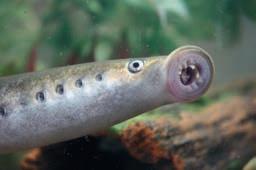
to the Cambrian period. Even if that is not the case, lampreys are one of the most ancient vertebrate groups on our planet, having swum in the waters during the time of the dinosaurs and survived at least four major extinction events since then. The modern diversity of lampreys probably only emerged in the Cenozoic era during the last 10 to 20 million years. To which talents these animals owe their extraordinary survival ability, persistence and longevity over millions of years is hard to say. However, the specialised parasitic feeding behaviour that some species of Cyclostomes still practice today might be involved. They attach themselves with their toothed, funnel-shaped suction mouth to fish and other aquatic hosts to suck their blood and rasp
off flesh, skin, and scales from the bones.
There are currently 38 known living species in the jawless group (Petromyzontiformes) worldwide, with two smaller families living in the Southern Hemisphere (Geotriidae, Mordaciidae) and one large family in the Northern Hemisphere (Petromyzontidae). In both the north and the south, the occurrence of lampreys is mainly restricted to temperate regions because their larval stages cannot survive the high water temperatures of the tropics. About half of the 38 species live parasitically in adulthood, feeding on the blood and tissue debris of their victims and to which they cling with the teeth of their suction mouth. The other half are ‘vegetarians’ and
only eat algae and aquatic plants, which they rasp off of stones and other hard structures.
All lamprey species go through a larval stage in the early phase of their life known as ammocoetes (English) or querder (German), lasting several years. Some species even spend the majority of their lives in the young ammocoete stage. These larvae differ significantly from the adult animals in appearance and lifestyle. They have a worm-like shape and are practically blind, but can perceive light and shadow. Additionally, they lack the characteristic suction mouth, which develops only at the end of their larval period during metamorphosis into the adult form. Ammocoetes feed exclusively on plankton and suspended particles, filtering them from the water in a manner similar to mussels. The term querder is derived from the Old High German querdar, from which the word köder (bait) eventually emerged. Our early ancestors had noticed that the spawning aggregations of lampreys, where often hundreds of animals gather, attracted numerous predatory fish. The lampreys passionately engaged in reproduction are equally enticing and easy prey for them. In countries such as Great Britain, lampreys are still commonly used as bait for fishing.
In European waters, three species in particular – sea lamprey, river lamprey, and brook lamprey – have historical, ecological, and regional economic significance even today. In spite of some similarities, river lamprey (Lampetra fluviatilis), brook lamprey (L. planeri), and sea lamprey (Petromyzon marinus) show differences that are evident not only in their body lengths but also in
their lifestyles and distribution. While brook lampreys grow only to a maximum of 15 to 20 cm, sea lampreys can reach lengths of up to 1.2 metres. River lampreys fall in between at about 50 cm, but on average, most specimens of this species hardly exceed 30 or 40 cm. River and sea lampreys are anadromous migrants that, like salmon, migrate to the sea after metamorphosis and return to fresh water years later to spawn. The migrations of the brook lamprey, on the other hand, are confined only to fresh water. This species, which occurs only in the upper reaches of Western European rivers north of the Pyrenees and the Alps, does not feed after metamorphosis. The animals only spawn and then die. A life-cycle comparable to that of mayflies.
However, the suspicion has recently grown stronger that brook and river lampreys might be ecotypes of the same species, much like river trout and sea trout. Where both forms coexist, they spawn together, and occasional crossbreeding produces viable offspring. Even with genetic methods, it is not possible to clearly differentiate between species. The only significant difference is in their migratory behaviour. Whether they are two separate species or just one remains an intriguing question that still requires definitive clarification.
The most widespread and economically important species is the river lamprey, which used to be found in nearly all larger rivers in Europe and adjacent marine areas and is still present in some regions. There are no records for the eastern Mediterranean, the catchment area of the Black

Sea including the Danube, and the northern parts of Scandinavia. River lampreys were popular food fish in the Middle Ages, but their populations gradually declined due to water pollution and the destruction of suitable spawning areas. For this reason, this endangered species was included in the EU Nature Conservation Programme under the Habitats Directive.
The life cycle of the river lamprey largely follows a family-typical pattern. Adult lampreys lay their eggs in nests that they dig in the sandy or gravelly beds of clear rivers. After hatching, young larvae are carried downstream by the current until they reach soft sediments, where they bury themselves so deeply in the silt that only their heads stick out. There they live for several years as filter feeders, filtering detritus, plankton organisms, and organic suspended particles from the water. The anatomical differences of the ammocoetes compared to the adult animals include a gill gut, which is used for feeding. However, the water flows extremely slowly through the feeding apparatus of the ammocoetes, which is why they require particularly nutrient-rich water to meet their needs. While mussels
and other invertebrate suspension feeders often make do with less than 1mg of organic solids per litre, ammocoetes need at least 4mg/L. In the course of metamorphosis, which takes several weeks, the gill gut is transformed into gills and the previously non-functional eyes become functional. Moreover, the typical suction mouth of the mature animals with hundreds of tiny teeth develops during the metamorphosis.
The metamorphosed river lampreys are now ready for life in the sea and migrate downstream with the current. They remain there for a minimum of three to four years, preferably in the shallow coastal areas, where they live parasitically. They occupy host animals, anchoring themselves to their bodies with the teeth of their suction mouth. The lampreys then scrape away skin and muscle tissue from their victims with their sharp rasping tongues, mixing everything into a nutritious slurry that they suck up along with blood and tissue fluids. Once they are sufficiently satiated, however, they leave their food source. For large and strong host animals,
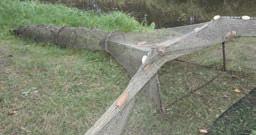
these ‘vampires’ are unpleasant but usually harmless. Especially as the lamprey carefully conceals its attacks with highly effective substances in its saliva (anticoagulants) that numb pain and inhibit blood clotting. Although the round suction mouth leaves characteristic scars on the surface of the body, the victim animals typically survive. Only sick and weakened animals are at serious risk. Occasionally, it may also happen that a lamprey penetrates the abdominal cavity of a prey fish, injuring internal organs and killing it.
River lampreys mainly infest fish, often cod or herring. Occasionally, they also prey on marine mammals such as whales or dolphins and sometimes even on people who are swimming unsuspectingly along the coast. Although attacks by lampreys on swimmers are extremely rare, they are certainly unpleasant for the affected individuals, however, not a reason to avoid swimming. The shock is usually greater than the danger since lamprey bites are neither venomous nor really dangerous. Especially as the attackers can easily be removed with a firm grip. However, why lampreys stray and attack humans remains a mystery. One hypothesis suggests that lampreys find certain substances in sunscreen and skin creams particularly attractive,
which is why these may serve as a sort of ‘attractant’.
After several years in the sea, lampreys become sexually mature. They then stop feeding and migrate back to the upstream parts of rivers. In the course of their return migration, their intestines regress. It has not yet been definitively established whether they return to their original waters. The suction properties of their mouths give them a certain climbing ability, allowing them to overcome small obstacles such as weirs or ramps in the river with ease. In the spawning waters, the lampreys usually go into hibernation before breeding the following spring from February to May. To do this, the males dig spawning pits in the substrate before wrapping their bodies around the females, which attach themselves above these pits. Over the course of several spawning acts, which can last for days, the female lays up to 40,000 eggs, which are fertilised by the male.
The principle of spatially separated life stages (larvae in freshwater, adults in the sea) is a clever biological strategy that prevents competition between various age stages and allows optimal resource utilisation.
However, it becomes a risk when one of these habitats is restricted or access to them becomes difficult. Lampreys have also experienced this, as humans have put these creatures that have survived for hundreds of millions of years under serious threat through massive changes to their habitats. Lamprey populations are seriously endangered in many regions of Europe due to the loss of river habitats, overfishing, and pollution. Dams and other barriers block migration routes and cut the animals off from their spawning grounds. Predators such as cormorants and otters reduce the populations, while the dredging of riverbeds kills lamprey larvae in the excavated sediment.
However, building artificial waterways has sometimes created new habitats for lampreys. For example, in North America, sea lampreys have become an invasive pest in the Great Lakes. After the construction of the Welland Canal to circumvent Niagara Falls, sea lampreys invaded the waters and decimated the populations of some fish species found there by up to 95. As a result, the formerly abundant commercial fishery collapsed in 1950s.
Although their mucus is considered toxic, and lampreys can therefore only be consumed after thorough cleaning, their aromatic, fatty meat has been highly valued as a culinary speciality since time immemorial. Roman writings mentioned them as a delicacy as early as 2000 years ago, and in the Middle Ages, lampreys were a staple in noble dining. Around 1550, the Swiss naturalist Conrad Gesner wrote that they were “good and commendable
in springtime, the bigger, the better”. It is even said that King Henry I of England was so fond of lampreys that he regularly ate them, against medical advice, even in old age and ultimately died after an excessively sumptuous meal of lamprey. For centuries, a lamprey pie was one of the traditional gifts presented at royal coronations in England. Even Elizabeth II was honoured with such a lamprey pie at her coronation in 1953. It was not until Charles III took office in 2023 that he renounced it.
In many regions of Europe, lampreys are now so rare that they are considered an endangered species and are under strict protection. However, in a few areas, they are still so numerous that they are regularly fished and eaten as a valued meal: grilled, fried, smoked, or marinated in vinegar and set in jelly. In Sweden, Finland, and Latvia, they are virtually part of the culinary heritage, as shown by the traditions upheld in Västerbotten, Sweden. The Nakkila municipality in Finland and the small commune of SainteTerre in France feature lampreys in their municipal coats of arms, and in Latvia, river lampreys are available in supermarkets. For the small Latvian town of Carnikava, located north of Riga, the tradition of lampreys is so important that it was included in the list of Protected Designations of Origin (PDO) by the European Commission in 2015. Pursuant to Government Ordinance No. 587/2006 in Portugal, only sea and river lampreys may carry the trade name Lampreia Arroz de lampreia (rice with lampreys) is one of the most important and popular dishes in Portuguese cuisine. Lampreys are also a traditional speciality along the Atlantic coasts of Spain and France: Lamproie à la bordelaise is a classic of French regional cuisine. Manfred Klinkhardt
A parasitic species that preys on other fish, the lamprey is popular across Latvia and in parts of Lithuania and Spain. Fishers use specialised gear to trap this anadromous fish as it migrates from the sea into fresh water to breed. Catches in all three countries are modest, but the fishery has a long tradition, and the lamprey is celebrated in festivals in both Latvia and Spain.
The river lamprey (Lampetra fluviatilis) is a jawless, eellike fish with a round sucking mouth equipped with horny teeth. Its length varies from 15 to 100 cm and as an adult the animal is parasitic, attaching to fish with its mouth and feeding on the blood and tissue of the host. In the Baltic, common hosts are herring and sprat. The lamprey is anadromous returning from the sea to freshwater to spawn. Commercial fishers in several European countries catch the lamprey using weirs or fyke nets.
In Lithuania, members of the Association of Fishing Enterprises Lampetra are among the fishers that target the species. Siga Jakubauskiene, who manages the association, says that lampreys are caught in the Nemunas and Sventoji rivers, the coastal Baltic Sea (only as an accidental bycatch), and the Curonian Lagoon. In the rivers, the traditional gear used is a fishing-basket (creel) which requires just one to two people, while in the Curonian Lagoon, longline lamprey traps are set, each of which can be up to 100 metres long. These require a team of three to four people to operate. The fishery is managed
by the Ministry of Environment which has set a quota of 3,500 kg/year until the end of 2025 in the Nemunas and Sventoji. In the Sventoji, the Fisheries Service under the Ministry of Agriculture has allocated transferable rights to the fishing quota for lamprey to four companies. These quotas are approved annually by the Ministry of Environment to reduce the risk of overfishing. In the Curonian Lagoon, the ministry has restricted the number of gears to 42 until 2026. Lamprey fishing is limited to inland fishermen holding a fishing permit and a fishing quota, which they acquire by auction. In the Curonian Lagoon, fishers with a historical fishing licence who have been fishing for the last three years are allocated a gear quota without an auction.
The fishery is seasonal from 15 September to 1 February in the Curonian Lagoon. However, the ministry has noted that lamprey migration now only starts in October, perhaps due to warming waters, and plans therefore to delay the start of the season. The Sventoji can freeze in winter and once that happens it is not possible to set traps even if it is within the fishing period. The quota in the Sventoji has declined from 2000 kg to 15 kg in 2023 with the result that fishing was abandoned due to fishers’ concerns about exceeding the
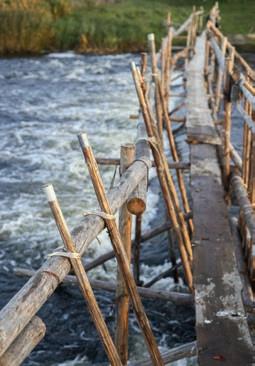
A lamprey weir is one of the ways used to catch lamprey in Latvia and Lithuania. The weir is usually rebuilt each season as it is too fragile to survive a whole year.
allocation and being penalised. From 2026 fishing for lamprey will be prohibited altogether to the consternation of lamprey fishers who see no scientific or legal basis for the ban. Apart from depriving the fishers of a source of income, the move to ban lamprey fishing threatens a traditional and specialised fishery. In fact, they claim,

scientists encourage the fishing of lamprey as it is a parasitic animal that feeds on valuable species like cod and salmon.
Climate change, hydroelectric dams and other barriers, as well as intense fishing are among the factors that threaten the lamprey stock, and so in 2018, Lithuania and Latvia launched a joint project to assess and manage lamprey stocks in Lithuania and Latvia. The three-year project brought together scientists from Klaip da University, the Latvian Institute for Environment, Food Safety and Animal Welfare “BIOR” and the Lithuanian Fund for Nature. The main objectives of the project were to develop a standardised methodology to assess lamprey stocks, improve lamprey populations, and propose a strategy for sustainable stock management to be endorsed by both countries. The river lamprey is a protected fish at EU level, listed under the Bern Convention and the IUCN (World Conservation Organisation) list of protected species. Data on these animals show that hydroelectric dams and other barriers to migration have the greatest negative impact on
stock status. Lampreys need open river migration routes, as they are poor swimmers, and if they encounter even a small obstacle on their migration route, they cannot reach their destination.
In 2023 there were seven companies fishing lamprey commercially in rivers and 12 companies fishing in the Curonian Lagoon. Most of the catch is exported to Latvia where it is considered a delicacy and processors there have developed several ways of preparing the fish including grilling, frying, smoking, and preserving in jelly. In Lithuania, on the other hand, lampreys are consumed mainly in the coastal area where they are caught and hot smoking, baking, or marinating are the typical methods of preparation. Catches in the Curonian lagoon, the main source of the fish, have been largely stable since 2020 at about nine tonnes but spiked in 2023 to over 22 tonnes. Ms Jakubauskiene hopes this development presages a lasting increase in catches in the years to come.
In Latvia, as in Lithuania, the fish migrate to the rivers mainly in the fall. They are found in all the
major rivers flowing to the Baltic Sea and the Gulf of Riga, while the main spawning sites are in the rivers Salaca, Gauja (in Carnikava), Daugava, Irbe, and Venta as well as their tributaries. The fishing season is usually in the fall and winter and varies in length from river to river. Traditionally, fishers build lamprey weirs to capture the fish. These are complex wooden structures that are dismantled and reassembled each year and are designed to block the flow of water apart from a gap about a third of the width of the weir. The weir pushes up the level of the water and forces it through the gap so any fish carried by the water can be caught in the fyke nets attached to the weir. Most, though not all, of the fishing grounds are located downriver close to the sea. Fishing takes place at night as that is when the fish are most active. They will avoid light—even moonlight—so the best time to fish them is overcast or moonless nights. According to FAO, in the 10 years to 2022 annual catches have varied from a peak of 92 tonnes (2019) to a low of 28 tonnes (2022). The Latvian state supports the stock and the fishery by breeding lamprey at the state hatcheries and restocking it in rivers. The joint Latvian Lithuanian study of lamprey
stocks notes that assessing lamprey stocks accurately calls for monitoring lamprey larvae. The lack of this scrutiny together with the absence of any gauge to assess the impact of restocking activities are among the weaknesses that need to be addressed in any management plan for the fish.
In Spain, commercial catches refer to the sea lamprey (Petromyzon marinus) which, like the river lamprey, is also eel-like and jawless with seven gill openings behind the eyes on either side of the body. It too has a suction-cup mouth with layered rings of sharp teeth with which it attaches to prey to feed. In Galicia lampreys are captured with a purposedesigned gear called the lampreira. This is a three-panelled gillnet measuring a maximum of 120 m in length and 3 m in height and with a 7 mm mesh. One end of the net is fixed to the boat and the other is left to drift. Fishers cast the net into the water and drift downstream to the mouth of the river as the tide goes out. Once they reach the mouth, they pick up the net and return to the upper part of the river to repeat
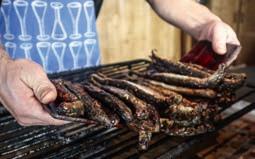
https://www.liepajniekiem.lv/zinas/novados/foto-un-video-negu-diena-cilveku-ka-jura/

Lampreys are popular particularly among people of a certain generation. Here, freshly caught lampreys are sold directly to the consumer.
the procedure capturing the fish as they swim upstream to reach their spawning grounds. Manuel Pacheco Alonso, secretary of the cofradia A Guarda, says that the fishing interrupts the spawning of some individuals, but many more make it to the spawning grounds, where, shortly after spawning, the adults die. In the lower reaches of the Miño River ancient stone structures, pesquiera, in the river are also used to fish lamprey using nets called biturón. This very traditional fishery is considered recreational and the rights to use the pesquiera pass from one generation to the next. Open season for the lampreira is usually from the beginning of January to April, while for the biturón it starts and stops about a month later. Recreational fishers also sometimes use fish spears to catch sea lamprey which must have a minimum weight of 800 g to be
legitimately caught. In A Guarda, Mr Alonso says, the fish is marketed in two size categories, 800 g to 1.2 kg and 1.205 kg to 1.995 kg. To fish lamprey fishers must meet various requirements including a certified boat, qualifications to sail the boat, social security, and a licence to carry out a commercial activity.
The fishery is managed by the permanent international commission of the Miño River (CPIRM) and the season is typically from around the beginning of January to the end of April.
Management is at the national level as the river is shared by Spain and Portugal and the commission, which has representatives from both sides, meets each year alternately in the two countries. Proposals from the sector as well as technical measures are discussed and analysed before decisions are taken. Fishing
associations are invited to the meeting but cannot take decisions. The Spanish delegation comprises representatives both from the federal ministry of agriculture and from the Galician ministry of the sea.
Although the fishery only has a four-month season, some professional fishers combine this with other fishing or horticultural activities to earn their livelihood. In the past sea fishers who could not fish in the winter because of the weather fished for lamprey instead. People working in agriculture too would catch lamprey as there was no work in the fields in winter. However, with new rules governing these activities and restrictions on who may fish, the number of lamprey fishers
has declined from 120 before the legislation was introduced to 56 today. Catches of lamprey have also tended to fall over the five years to 2023 which Mr Alonso attributes to the cyclical nature of the fishery. When catches are smaller, however, the unit price goes up. He also points to some of the factors that can affect spawning such as the release of water from dams that affects the flow in the river, water quality due to discharges into the river, and invasive species. In Galicia lamprey is a traditional dish but most consumers belong to older generations; younger people do not have the same attachment to this species. It is also found in rivers in Asturias and the Basque country in northern Spain so there should be potential for lamprey consumption there too. Sales of lamprey in Galicia are either directly from the vessel or from authorised centres and an electronic document trail ensures traceability from the catch to the final buyer. The animal is sold live and needs therefore to be stored appropriately. All the lamprey fished in the Minho river in Galicia is sold in A Guarda. Prices have been trending upwards since 2013, when the median price per kilo was EUR7.68. In June 2024 it was EUR66.10. The high prices may encourage imports of lamprey from France which some traders mislabel as being from Galicia, says Mr Alonso. He would like to see the introduction of a virtual auction for lamprey where with the help of an app buyers can make their bids. The system already exists for the sale of eel, and it ensures that the price never falls below a pre-determined level. Convincing new consumers of the healthfulness and taste of lamprey may well be feasible, but as long as prices do not descend from their current levels the market in Galicia is unlikely to expand.
Established in Svendborg, Denmark, in 1993, J.P. Klausen & Co. A/S is a prominent seafood company with a global reach, specialising in the supply chain for seafood to various industries.
As a member of the NissuiJapan group, one of the world’s largest seafood corporations, J.P. Klausen controls a significant portion of global wild catch fish quotas. The company’s operations span the entire value chain, from fishing with their own trawlers, processing seafood in their factories, to marketing and distributing the products through their own networks.
value and the best possible market access
The company provides the highest quality seafood products to create value for customers and focuses on offering the best possible market access and returns for trawler and quota owners, ensuring their products achieve optimal value. Additionally, the company emphasises constant communication with both customers and suppliers to tailor products and delivery terms to meet specific needs effectively.
J.P. Klausen operates with two key customer segments: manufacturers and processors, and importers and distributors. Their tailored services, supported by dedicated teams, ensure seamless logistics and customised solutions for a wide range of markets globally – across Europe, Africa, Asia, and South America.
The portfolio includes species such as Alaska pollock, Pacific

cod, hake, hoki, herring, and mackerel, sourced from regions like the USA, Argentina, New Zealand, and the Faroe Islands. The product forms include frozenat-sea fish blocks, surimi base blocks, frozen fish fillets, and IQF portions and loins.
The company is committed to quality control and sustainability. All of their producers’ operations are certified to HACCP requirements, with many also
holding ISO, BRC, or IFS certifications, ensuring high standards of traceability and safety. The company’s internal and external quality control teams maintain rigorous checks across their global network of factories and laboratories.
Sustainability is a core value, with an emphasis on sourcing products from Marine Stewardship Council (MSC) certified fisheries. The company actively promotes sustainable fishing practices and is involved in developing innovative fishing
techniques. Their commitment to responsible operations spans from catching to distributing, with a focus on protecting marine ecosystems and supporting sustainable wild fish fisheries globally. As a recognized leader in the sector, J.P. Klausen holds the most diverse range of MSCcertified fisheries worldwide and continues to drive initiatives for ocean conservation and responsible fishing.
For more information on J.P. Klausen & Co. A/S, please visit the website: www.jpklausen.com
seafood business:
For Ukraine’s capture fisheries, the current war started, in fact, in 2014 with the annexation of Crimea, when the country lost access to over half of its marine resources. Even with that loss the wild capture sector remains the country’s second-largest source of fish and seafood after imports, contributing about 20% of the total supply in the period between 2014 and 2022. Capture fisheries are historically carried out on the high seas, in the Black and Azov Seas, and in inland waters. Russia’s invasion severely damaged Ukraine’s marine captures: in 2021, before the invasion, catches from the Black and Azov Seas totalled about 16,300 tonnes according to national statistics. This was already 80% below what it was before the annexation of Crimea. By 2023 catch volumes from the Sea of Azov plunged to zero, and catches in the Black Sea plummeted to 415 kilos only, a tiny fraction of levels in preceding years.
Eurofish spoke to Mr Serhiy Artemenko, the head of the Lieutenant Schmidt fishing cooperative, located in the Rybakivka settlement of Mykolaiv region, on the Black Sea coast, to learn how Ukraine’s fishing communities adapt to these harsh conditions. This is the ninth in a series of articles in Eurofish Magazine dedicated to seafood businesses in Ukraine and how they work and survive during the war.
The state-owned fishing cooperative named after Lieutenant Schmidt was established in 1958 through the merger of several local cooperatives, some of which date back to 1928. This means the Schmidt cooperative is nearly a century old. While exploring the archives, Mr Artemenko discovered an old register that listed the co-op’s fishermen—some born as early as 1870—along with their families. So, for the members of the cooperative, the history of their enterprise is not just about its longevity; it’s also a story of the local community and the generations of fishermen who have contributed to its legacy.
Mr Artemenko was appointed chairman of the cooperative in 1989 and has kept this position since then. In 2007, the
state-owned cooperative— named after a historical figure, a Russian naval officer and revolutionary—became a private enterprise and it was decided to retain the historic name as a trademark.
Traditionally, the co-op caught Black Sea sprat ( Clupeonella cultriventris ) and anchovy in the Black and Azov Seas, gobies (Gobiidae), mullets ( Mugilidae spp.), and big-scale sand smelt ( Atherina boyeri) among others in the coastal areas and the estuaries of Tylihul and Berezan. The annual catch fluctuated between 5,000 and 6,000 tonnes, of which Azov catches were about 2,000 tonnes, The Black Sea catch reached 1,500 to 2,000 tonnes, and the rest was harvested in coastal zones. About half of the catch was anchovy, sprat was 10, and the rest of the catch was mainly smelt. Frozen or processed fish was then sent to be sold locally
in Kyrovograd, Cherkasy, Odesa, Mykolaiv, Vinnytsia, and Poltava among others.
Before 2014, the co-op was on the top-5 list among other fishing enterprises in the area. The fleet included two large vessels— a seiner and a reefer with engine capacity of 300 hp and length of 27 meters each, 10 longboats, and five small fishing boats. The onshore processing facility produced 2.5 tonnes of smoked, salted, and dry-cured fish daily. The cooperative employed 20 full-time and up to 80 part-time fishermen, and 20 persons, mainly women, worked at the processing plant.
The annexation of Crimea made it impossible for the cooperative to fish in the Azov Sea as sailing through the Kerch Strait—the only waterway connecting the Black and Azov Seas—was blocked by Russia.

Mr Serhiy Artemenko, the head of the Lieutenant Schmidt fishing cooperative
The cooperative also lost its two largest vessels, the trawler and the reefer, in the port of Mariupol in the Azov Sea. The vessels were simply locked there and their current status is unknown.
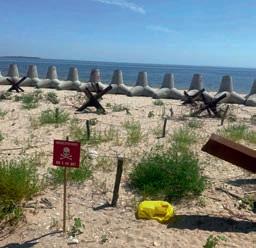
Currently the cooperative owns 25 vessels, most of them undecked, made of wood or fiberglass, 4.5 to 12 meters long. About 90 of them switched from stationary diesels to outboard engines of 25 to 75 hp. The number of full-time fishermen is 15-18, and during the fishing season 60-70 part-time fishers are employed in addition.
From the very first days of the war, all the fishermen of the co-op took an active part in building defensive fortifications. Mr Artemenko, through his own network, got hold of 130 assault rifles and a few thousand cartridges to arm his fishermen and some members of the local community. Three armed groups were formed for a night patrol, each equipped with a thermal imager, to help the army’s surveillance.
In those days the army sometimes lacked supplies of food,
Sea) in March 2022 caused the loss of the fishing grounds in the area. “Despite the loss,” explains Mr Artemenko, “during the first year of the war we were fishing at sea almost as usual, but then the conditions became more dangerous due to increased shelling and floating mines.” Destruction of the Kakhovka dam in June 2023 washed into the Black Sea more mines, and additionally wreckage, garbage, and both dead and living animals. The latter were not left in the lurch: “We rescued a few dogs from floating garbage islands, and once even fished a cow! laughs Mr Artemenko, and all of them have survived.” Floating mines remain a major problem and have led to the closure of a 20-kilometer strip of the coastal zone.
from the Dnieper River, which was previously used for irrigation and for the cooling systems of the Zaporizhzhia Nuclear Power Station, and also fed the Kakhovka reservoir, now flows straight to the Black Sea. The desalination affected the local species: the Black Sea shrimp (Pandalus latirostris) has almost disappeared from the area while freshwater species, roach (Rutilus heckelii) in particular, have become more abundant.
equipment, and clothes. The local community provided as much support as possible—collecting funds and clothes, and serving food three times a day in three canteens: at the local school, recreation facility, and kindergarten.
To ensure the supply of drinking water, which is pumped from wells, for the local community, the cooperative bought three-phase power generators, and solved the problem of fuel shortages by simply buying fuel wherever possible and storing it in drums. In ways like this, the co-op has done what it could to help the community function normally under the conditions of wartime.
While the challenges related to the defence of the area arrived quickly, the challenges to fishing activities have developed gradually. First, Russia’s occupation of the Kinburn Spit (the northeastern part of the Black
Though coastal waters are now abundant with anchovies and rapa whelk (Rapana venosa), which the co-op started fishing about three years ago, the Lieutenant Schmidt cooperative had to switch completely to fishing in Tylihul and Berezan estuaries. Fishing in the estuaries generally is seasonal and allowed only during the autumn and winter months. These days, for safety reasons, any movement of civilians in 70 of the estuaries’ waters is banned, so the fishermen are not allowed to use fishing boats and can use only small-scale stationary uncovered pound nets (max height of three meters), fixed not further than 30 meters from shore. Major species harvested are gobies, Atherina, and mullets. Most of the catch is sent chilled on ice to the farmers markets in Odessa, while the rest is frozen and stored.
Importantly, the war has also impacted the salinity of the coastal waters, as well as the salinity in Berezan estuary: the water
Human resources is another problem that the cooperative has faced: about 60 of its fishermen were drafted into the army, so the workforce is now represented by pensioners from 60 to 80 years old, and younger men who are unfit for military service for health reasons or are in the army’s reserve.
Can a war teach anyone anything?
“In challenging times like these, says Mr Artemenko, we truly get to know one another better— how we think, what we value, and how we cope with what’s happening around us. It’s a time to see people for who they really are. And through it all, we should be grateful that we’re alive, doing our best to work and survive. If you wake up in the morning with your eyes, hands, and legs still intact, that’s reason enough to be happy!”
The war has made Ukrainians fearless—they know they can die tomorrow but are not afraid of it any longer. Instead, they value a day-to-day life and enjoy all the good things it brings, things worth living for, and they do not postpone anything till tomorrow.
Aleksandra Petersen, Eurofish, aleksandra@eurofish.dk
CLIMAMAT CROSS POWER by VETEC Anlagenbau: Revolutionary technology for the fish industry
VETEC Anlagenbau has been working with installation systems for drying, smoking, cooking, cooling, pasteurising, maturing, and thawing under the motto “We build your solution” for decades. The family-owned company develops and manufactures individual premium industrial machinery and is an international technology leader in thermal food treatment.
As the latest development from VETEC, the CLIMAMAT CROSS POWER represents a best-practice solution in every respect. VETEC has introduced a number of innovations that led this universal system for all thermal processes for products with horizontal airflow such as salmon, trout, and mackerel to win the silver Anuga FoodTec Award in 2024 from DLG e.V. (Deutsche Landwirtschaftsgesellschaft).
Award winning CLIMAMAT CROSS POWER offers numerous advantages
With the CLIMAMAT CROSS POWER either a classic batch process or a fully continuous production line can be set up based on a semi-batch operation, which offers numerous advantages. The reliability, cleaning, and maintenance options as well as the space requirement per tonne of product are decisive factors here. The flexibility of the semi-batch concept as a fully continuous installation system makes it possible to integrate a kind of buffer into the production line. Although the costs of investing in such a system are comparable to those of a wellknown system such as a spiral conveyor, the CLIMAMAT CROSS POWER far exceeds them due to its advantages in terms of ease of maintenance and reliability.
With the ability to load up to 50 layers on a standard trolley (1,006 x 1,010 x 1,985 mm), the CLIMAMAT CROSS POWER can accommodate a significant amount of weight while reducing the system size. With the highest productivity per trolley available on the market, it enables denser product loading. Depending on the product type, the process time can also be minimised thanks to the high air speed. This means that a larger quantity of products can be placed on the trolley without affecting the uniformity of the airflow and thus the quality of the treatment. Compared to conventional systems with vertical airflow, the CLIMAMAT CROSS POWER can hold almost twice the weight of products. The very high air speed of the CLIMAMAT CROSS POWER offers further advantages. The powerful airflow allows a smaller distance between the products on the layers, resulting in more uniform treatment and a shortened process time. This is particularly advantageous for products where rapid drying or treatment is required. In addition, the high productivity per trolley helps to reduce overall energy consumption and production costs.
VETEC has set itself the task of developing a “crossflow” that







does not yet exist in this form in the industry. VETEC’s knowhow lies not only in the expertise of its own food technologists, who know exactly which process suits the respective products, but also in ensuring a uniform air flow within the installation and developing suitable solutions. To achieve these goals, VETEC relied on flow simulation software from the early concept phase until the air distribution nozzle (patent pending) was designed. The installation system is modular and can include both cold and hot smoke units. The system sizes are modularly expandable.
The CLIMAMAT CROSS POWER appears in a new guise, which is





CLIMAMAT CROSS POWER offers innovative functions and solutions for the highest demands on product monitoring and flexible climate control, with a focus on energy efficiency and quality.

made visible by a V-bend in the door, which serves to stabilise the stainless steel during thermal expansion while ensuring an aesthetically pleasing look. The CLIMAMAT CROSS POWER for lying products is available in sizes 1x3 trolleys to 1x8 trolleys with different types of heating. Its width is 1,750 mm, length and height varying depending on the number of trolleys in the chamber.
For more information:
VETEC ANLAGENBAU
Barbara Engel, Marketing Manager
Tel: +49 4231 777 854
b.engel@vetec-anlagenbau.com www.vetec-anlagenbau.com
1-3 October 2024
Conxemar
Vigo, Spain
conxemar@conxemar.com https://www.conxemar.com/en/exhibition/
30 October – 1 November 2024
China Fisheries and Seafood Expo (CFSE)
Quingdao, China
Tel.: +86 10 58672620 info@seafarechina.com www.seafarechina.com

12-13 February 2025
AquaFarm* Pordenone, Italy
Tel.: +39 0434 232261
pdeodorico@fierapordenone.it www.fierapordenone.it
1-3 October 2024
FoodTech
Herning, Denmark foodtech@mch.dk https://uk.foodtech.dk/
8-10 October 2024
PolarExpo Fishing and Hunting
Ilulissat, Greenland
Tel.: +45 99 35 55 55 info@akkc.dk
14 November 2024
International Coldwater Prawn Forum
Amsterdam, the Netherlands jm@gemba.dk https://icwpf.com/
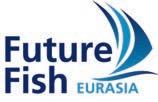
10-12 October 2024
Future Fish Eurasia *
Izmir, Turkey
Tel.: +90 212 347 10 54 info@eurasiafairs.com www. eurasiafairs.com








10 – 13 December 2024
AlgaEurope 2024 Athens, Grece info@dlg-benelux.com https://algaeurope.org/

16-18 March 2025

Seafood Expo North America/ Seafood Processing North America
Boston, USA Tel.: +1 207 8425504 customerservice@divcom.com www.seafoodexpo.com

6-8 May 2025 *

Seafood Expo Global/ Seafood Processing Global * Barcelona, Spain Tel.: +1 207 8425504 customerservice@divcom.com www.seafoodexpo.com
* Eurofish will be attending
Publisher Euro sh International Organisation
H.C. Andersens Boulevard 44-46 DK-1553 Copenhagen V Denmark
Tel.: +45 333 777 55, info@euro sh.dk euro sh.dk
Managing editor Marco Frederiksen
Editorial offices Behnan Thomas (bt) H.C. Andersens Boulevard 44-46 DK-1553 Copenhagen V Denmark
Tel.: +45 333 777 64 behnan@euro sh.dk
Dr. Manfred Klinkhardt (mk) Redaktionsbüro Delbrück Franz-Stock-Straße 23 D-33129 Delbrück Germany
Tel.: +49 5250 933416 manfred.klinkhardt@web.de
Technical layout Thomas Jensen
Advertising Aleksandra Petersen Euro sh Magazine
H.C. Andersens Boulevard 44-46 DK-1553 Copenhagen V Denmark
Tel.: +45 333 777 63 aleksandra@euro sh.dk
Frequency 6 issues per year
Circulation 2500 copies
Subscription details Price: EUR 100,–To subscribe send an email to info@euro sh.dk
Unless otherwise stated, the copyright for articles in this magazine is vested in the publisher. Articles may not be reproduced without written permission from the copyright holders. An electronic copy is available on request to Aleksandra Petersen, aleksandra@euro sh.dk
ISSN 1868-5943
Order your free trial info@eurofish.dk



og tegundir sem henta ólíkum þörfum
Insulated containers
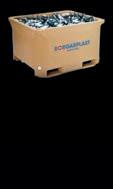
PIONEERS IN HIGH-QUALITY HIGHLY-INSULATED & HEAVY-DUTY FISH CONTAINERS
PROTECTING FRESHNESS AND QUALITY FOR DECADES MADE IN ICELAND
borgarplast.is/en
Polystyrene compressors
Pelagic fish processing In-house

Nobbingmachines andAuto-packers forsardineandmackerel
VredenburgSouthAfrica
Mobile: +27 83 2620362
E-mail: easycancc@gmail.com Website: www.easycan.co.za




ONE OF THE MAIN MANUFACTURES OF PROCESSING MACHINES FOR BIG, SMALL AND VERY SMALL PELAGIC FISH
Nobbing down to 110 pcs/kg
Filleting down to 100 pcs/kg Up to 450 fish pockets per min
Slånbärsv.4, SE-386 90 Öland Sweden info@seac.se WWW. SEAC.SE
The specialist in fishbox compactors and recycling Tel. +45 97371799 runi@runi.dk www.runi.dk A/S
Slicers kettle of fish
